Table of contents
- Travel: From Malaysia to Germany Steven’s Way of Life: Halfway around the world on a motorcycle
- April 15, 2013
- April 8, 2013
- April 1, 2013
- 21st March 2013
- 13th March 2013
- 4th March 2013
- Crisis or opportunity?
- February 26, 2013
- February 18, 2013
- 5th February 2013
- January 30, 2013
- January 28, 2013
- January 25, 2013
- January 21, 2013
- who I am?
- Help shape it interactively – how does it work?
- What was changed on the motorcycle?
- February 18, 2013
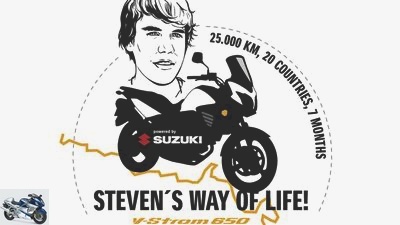
archive
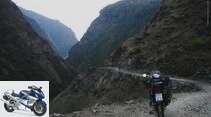
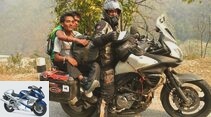

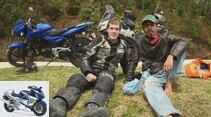
15th pictures
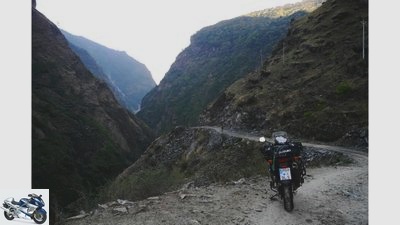
Hofmann
1/15
Steven’s Way of Life: The twelfth part takes Steven over Nepal’s bridges, mountains and valleys.
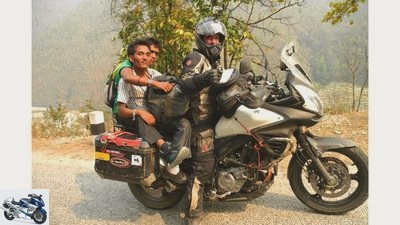
Hofmann
2/15
The locals are also always available for a jaunt.
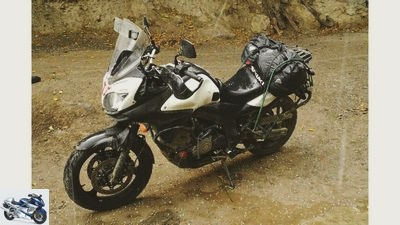
Hofmann
3/15
But before Steven sets off for the mountains, the machine is thoroughly cleaned again. Thank heaven!
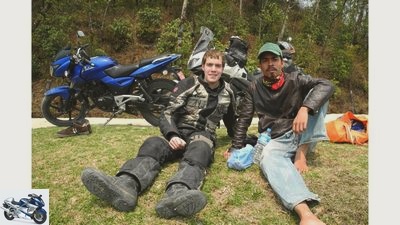
Hofmann
4/15
So it is hardly surprising that I appreciate the two-wheeler not only for tourists.
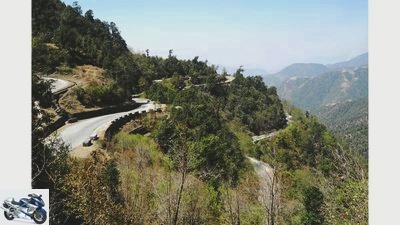
Hofmann
5/15
… and the practically endless curves do the rest for this sensational impression.
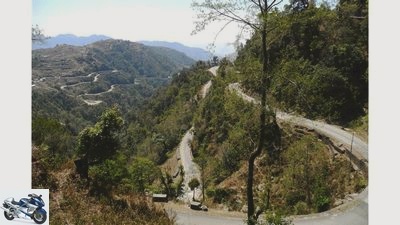
Hofmann
6/15
Nepal is a country for motorcyclists…
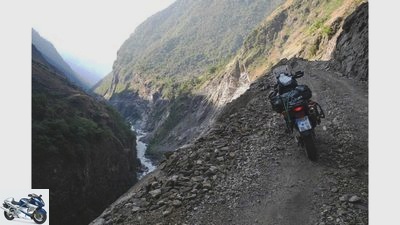
Hofmann
7/15
With a short stop it becomes clear that the gorge is getting deeper and deeper …
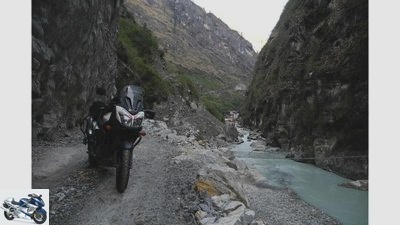
Hofmann
8/15
There it is done and the first more meters with it.
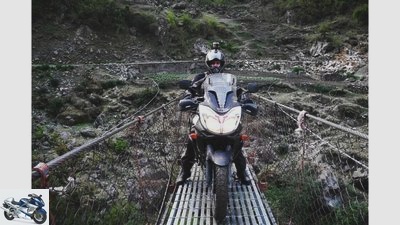
Hofmann
9/15
… and then quickly through the middle.
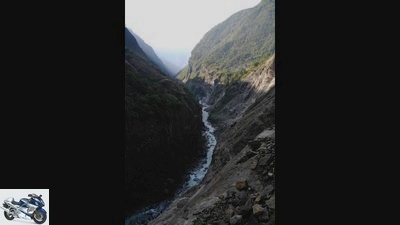
Hofmann
10/15
… a look to the right …
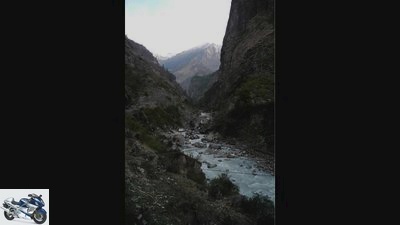
Hofmann
11/15
A look to the left, …
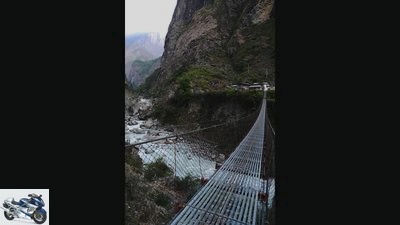
Hofmann
12/15
… probably the greatest test of courage so far.

Hofmann
13/15
And then she came …
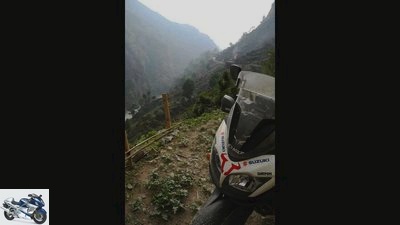
Hofmann
14/15
The first 3-4 hours were great! Good weather and hardly any other vehicles on the “Road”.
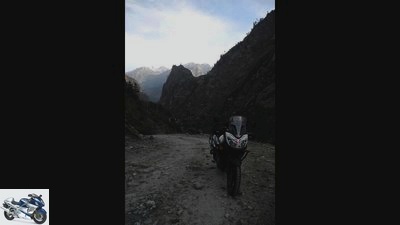
Hofmann
15/15
… and the view keeps getting better.
to travel
Travel: Halfway around the world by motorcycle
Travel: From Malaysia to Germany
Steven’s Way of Life: Halfway around the world on a motorcycle
Halfway around the world on a motorcycle – almost at least. Starting with a one-way flight to Malaysia, Steven Hofmann starts the 25,000 km long journey home to Germany and reports online for MOTORRAD.
Steven Hofmann
03/04/2013
April 15, 2013
Since my Indian visa was unbelievably long in coming, I had to stay in the Kathmandu region for ten days. After short trips to Dhunche and Daman, I returned to Kathmandu full of hope, but was disappointed by the very unfriendly staff at the Indian embassy. My visa was not ready on Friday as promised, but only on Monday. So with a bit of anger in my stomach I swung back on my motorcycle and drove almost 200 kilometers east to Jiri. The small mountain road wound up to 2,600 meters up the mountain, and after four and a half hours it led me to the sleepy trekking city.
After a relaxing day I wanted to return to Kathmandu, but was warned by the guesthouse owner that there is a strike across Nepal today. That probably needs a brief explanation. A strike in Germany means that nobody works, but everyone is free to move around. In Nepal, people continue to go to work – at least officially – but buses, motorbikes, cars etc. are not allowed to drive. Public life is so practically paralyzed. For me, Kathmandu was simply unimaginable without the obligatory traffic chaos and so I set off despite the warnings.
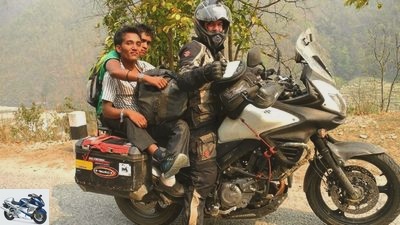
Hofmann
The locals are also always available for a jaunt.
And to my surprise, apart from a few motorcycles, I was actually the only vehicle on the road. About 70 kilometers before Kathmandu, two locals asked me for help, who urgently had to go to the Nepalese capital. On the spur of the moment, I packed the two boys on my Suzuki DL650 and only a little later reached the main road to Kathmandu. From then on it got really hairy. There were crowds everywhere, sit-in strikes, road blockades, the military and the police. I felt quite safe as I could be clearly identified as a tourist through my machine. My two companions, however, were gripped by sheer fear. They kept shouting to me: “Don’t stop, just go. Don’t stop for police, military or people. Never stop! “.
When the man behind me still clasped me convulsively and began to pray, I also got a little nervous. Suddenly a man with a two-meter-long iron bar appeared from the right, lashed out angrily and missed us by a hair’s breadth. From that moment on I didn’t need any more instructions. I drove as fast as I could, didn’t even think of stopping and sometimes avoided the roadblocks on the structurally separate oncoming lane. Loaded with adrenaline, we arrived in Kathmandu after what felt like an eternity and I drove straight to the family of a Nepalese friend who had invited me to their home.
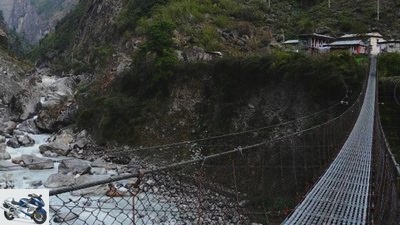
Hofmann
That was probably the greatest test of courage up until then.
I experienced an impressive level of hospitality from Haris and his family and left Kathmandu the next morning happily with my Indian visa. I was determined to tackle the infamous Annapurna Circuit with my DL650. This challenge would take me to remote Manang. After a long day, I stopped in Bensishar, cheered the BVB Champions League thriller and set off early the next morning towards Manang.
After only 500 meters the paved road stopped and became a dirt road, which became steeper and rockier with every kilometer. The road was blasted into the rock and has only been passable for a few months. That was definitely the toughest track I’ve ever driven. Very steep climbs and descents with loose scree, sand and boulders. And as if that weren’t enough, there was a slope, some hundreds of meters deep, waiting right next to the approximately two and a half meters wide road.
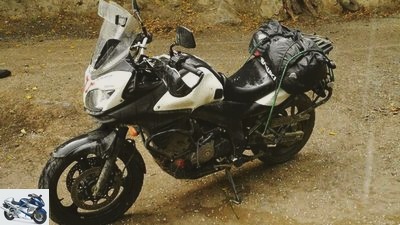
Hofmann
One gentle cycle for the V-Strom.
The first thirty kilometers or so to Jagat were still bearable, but then the onward journey turned into a Vabanque game. Due to the courses of rivers, parts of the road were softened and so muddy that I slid backwards uncontrollably towards the abyss several times and only through luck got grip again and was able to prevent the worst. As if that wasn’t enough, it started to hail and rain like buckets. I drive with normal road tires, which are tolerable on sand and scree, but completely unsuitable on mud. I continued my sled ride for kilometers, always hoping to find a village where I could spend the night.
After three hours my search was finally over and I could see a small cluster of houses on the other side of the gorge. But I was separated from this by a suspension bridge that was not very trustworthy and swayed threateningly just because of the wind. After a moment’s hesitation, I took heart and luckily I made it safely to the other side.
Unfortunately, it rained all night, so that the next morning the road was so muddy that it was impossible to continue driving. With a heavy heart, I decided to turn around. I love adventure more than anything and maybe I could have done it, but it would be an unnecessary risk. When I left, I promised my family that I would avoid precisely these incalculable dangers and so I carefully set out back to Bensishar.
This day was by far the most dangerous day of my trip. Surprisingly, not even because of the road. But that’s another story that I’ll tell you in detail in the next blog post.
April 8, 2013
<!– ESI FOR ads.BannerGallery / irelements / esielement / eyJwYWdlIjoiL3N0YXJ0c2VpdGUvIiwibGF5b3V0IjoiYXJ0aWNsZSIsImVsZW1lbnQiOiJhZHMuQmFubmVyR2FsbGVyeSIsImlyQ29uZmlnIjoiMTQ3Mzc4ODEiLCJwYXJhbXMiOnt9LCJpc01vYmlsZSI6ZmFsc2V9 –> <!– CACHEABLE –>&# 34;,&# 34; rectangle&# 34 ;: “<!–# include virtual = \&# 34 / irelements / esielement / eyJwYWdlIjoiL3N0YXJ0c2VpdGUvIiwibGF5b3V0IjoiYXJ0aWNsZSIsImVsZW1lbnQiOiJhZHMuUmVjdGFuZ2xlR2FsbGVyeSIsImlyQ29uZmlnIjoiMTQ3Mzc4ODEiLCJwYXJhbXMiOnt9LCJpc01vYmlsZSI6ZmFsc2V9 \&# 34; –> <!– ESI FOR ads.RectangleGallery / irelements / esielement / eyJwYWdlIjoiL3N0YXJ0c2VpdGUvIiwibGF5b3V0IjoiYXJ0aWNsZSIsImVsZW1lbnQiOiJhZHMuUmVjdGFuZ2xlR2FsbGVyeSIsImlyQ29uZmlnIjoiMTQ3Mzc4ODEiLCJwYXJhbXMiOnt9LCJpc01vYmlsZSI6ZmFsc2V9 –> <!– CACHEABLE –>&# 34;,&# 34; sky&# 34 ;: “<!–# include virtual = \&# 34 / irelements / esielement / eyJwYWdlIjoiL3N0YXJ0c2VpdGUvIiwibGF5b3V0IjoiYXJ0aWNsZSIsImVsZW1lbnQiOiJhZHMuU2t5R2FsbGVyeSIsImlyQ29uZmlnIjoiMTQ3Mzc4ODEiLCJwYXJhbXMiOnt9LCJpc01vYmlsZSI6ZmFsc2V9 \&# 34; –> <!– ESI FOR ads.SkyGallery / irelements / esielement / eyJwYWdlIjoiL3N0YXJ0c2VpdGUvIiwibGF5b3V0IjoiYXJ0aWNsZSIsImVsZW1lbnQiOiJhZHMuU2t5R2FsbGVyeSIsImlyQ29uZmlnIjoiMTQ3Mzc4ODEiLCJwYXJhbXMiOnt9LCJpc01vYmlsZSI6ZmFsc2V9 –> <!– CACHEABLE –>&# 34;}}” ga-track-vis =”article.gallery.inline.vis” class =”v-A_-article__inline-container”>

Hofmann




9 pictures
Pictures: Journey: From Malaysia to Germany
go to Article
To home page
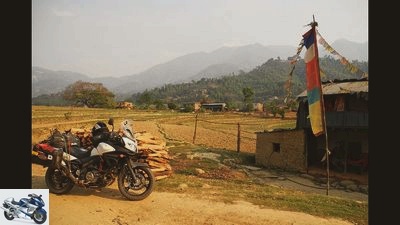
Hofmann
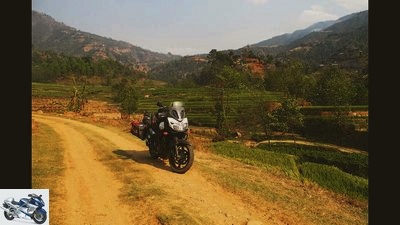
Hofmann
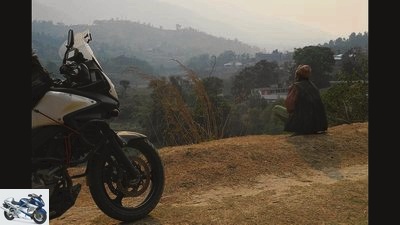
Hofmann
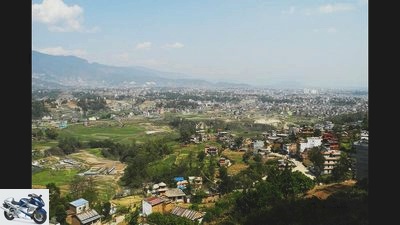
Hofmann

Hofmann
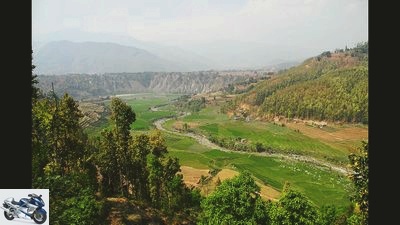
Hofmann
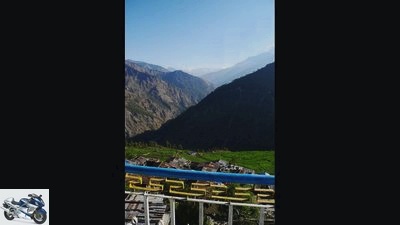
Hofmann

Hofmann
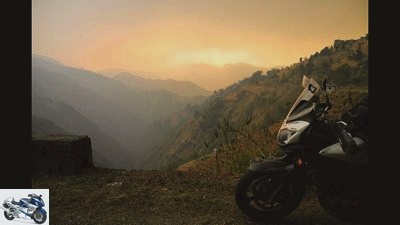
Hofmann
1/9
Thanks to my semester abroad in Bangkok, I still have many friends there and feel almost at home in the midst of the traffic jam and the hustle and bustle of the Thai capital. So a friend let me sleep on her couch and prepared me and her friends for a fantastic week. Parties, barbecue on a roof terrace, Muay Thai lessons and cooking together. I couldn’t have dreamed of the compulsory break caused by the motorcycle transport more beautifully.
For the first time, it was really difficult for me to leave a country. Nevertheless, I was looking forward to Nepal, as I had never been there and would certainly have many new experiences. This hope was already fulfilled on the drive from the airport to the guesthouse. In an ancient taxi, accompanied by a deafening hoot of horns, we bumped from one pothole to the next. Everywhere new colors, smells and things that I didn’t understand. For most of the taxi ride, I looked out of the milky window in amazement with my mouth wide open – so that’s what a culture shock feels like.
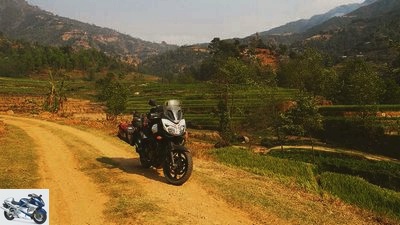
Hofmann
Far away from the overcrowded main roads, the path leads once again over dirt roads.
The first two days I wandered through the countless alleys in Kathmandu and tried as many of the regional specialties as possible. The kitchen consists more or less of Indian dishes and momos, a mouthfeel-like snack filled with buffalo meat. Although the city exudes a certain charm with its absolute chaos, after a weekend I was glad to be able to pick up my motorcycle at the cargo office. The countless people smugglers, drug dealers, beggars and salespeople were simply too much for me in the long run.
The same game awaited me in the Cargo Office. All forms are in Nepalese and there are no signs whatsoever to facilitate navigation through the large customs area. So a tractor became indispensable, which immediately demanded a proud USD 100 to get my motorcycle through customs. I told him from the start that I would not pay any USD without seeing that he had actually handed the money over to an official on account. He agreed and after about an hour the huge wooden box stood in front of me, which was opened directly by about ten enthusiastic Nepalese. Together we screwed my DL650 together within 30 minutes and I was ready to go.
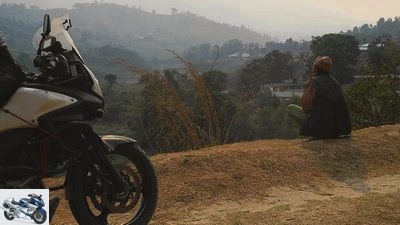
Hofmann
I would also like to have this calm one day …
My tractor finally presented me with a handwritten “invoice” for exactly USD 100 by chance. Impressed by so much audacity, I asked him for actual receipts. These added up to just USD 25, so I handed him USD 30, sat on my machine and turned on the ignition. As expected, six other smugglers ran straight to the side to stand by their cheat friend. They tried desperately to prevent me from driving away, but were only the second winner in a direct duel with my 69 hp. With a mischievous smile on my face, I drove back to my guesthouse so that I could finally go to the famous mountains of Nepal the next morning.
Around 11:30 am I left Kathmandu and drove north to Srybrensi. I wanted to spend the night there and then drive on a small gravel road to the Tibetan border the next day. I made excellent progress over the first 50 kilometers or so. The street was quite small and had seen much better days, but the fantastic view made up for everything. The whole time I drove right along the mountain through small villages, rice terraces and forests; on one side rock, on the other a slope up to 200 meters deep. The further I climbed into the mountains, the worse the road surface became. Again and again I saw landslides that were initially cleared, but more and more simply flattened and served as road substitutes.

Hofmann
Fantastically beautiful: here I treated myself to the three best bananas of my life so far.
For the next 15 kilometers or so I had to fight my way over rough boulders and deep sand. Always with a focused gaze on the road, but worrying thoughts on the slope, which would inexorably punish even the smallest mistake. After what felt like an eternity, I finally reached the paved roads again and was able to enjoy the spectacular mountain panorama for a few minutes.
When I was only 1.5 kilometers from my destination Dhunche at 4:00 p.m., a nasty surprise awaited me at a military checkpoint. You needed a permit for the onward journey, as this is where the Langtang National Park begins. Of course, I did not have this document and I was also not prepared to pay the required 3,000 rupees (EUR 30). Turning around wasn’t an option either, as I would never reach the next hotel before sunset. I looked desperately at the soldiers, pointed to my watch and the threatening thunderclouds, and asked them to at least let me spend the night in town. The next morning I would go straight back and sign off with them. Fortunately, they agreed to this suggestion and let me pass without a ticket.
As agreed, I left early after a cold night, checked out at the checkpoint and returned to Kathmandu to continue to Daman. From Kathmandu I chose small dirt roads and dirt roads to avoid the main road and the heavy traffic. The plan worked! For about three hours I bumped through remote villages and agricultural cultivation areas. And finally I had my first really positive experiences with people. While almost everyone in Kathmandu tried to cheat on me, I suddenly experienced the respect, friendliness and hospitality in rural Nepal that I had so much hoped for. Children shouted “Welcome to Nepal” to me, adults returned my head nod with a slight bow as I drove by and I was warmly greeted by the locals at every drinking break. Just great!
After a while I reached the main road and began the ascent to Daman, which is 2,300 meters high. In terms of landscape, this route has so far been the absolute highlight of my stay in Nepal. Unfortunately, I didn’t have too much time to enjoy, as the sun was already slowly setting and a mighty storm front was approaching threateningly. Shortly after 6 p.m., to my own surprise, I reached my destination for the day with dry feet and checked into a hotel with a TV in the room. Even in far-away Nepal I can’t miss the Champions League quarter-finals of my BVB against Malaga;)
Unfortunately, after a strong performance, it was only enough to make it 0-0, but they’ll take care of that in the second leg. I hope to finally get my Indian visa in the next few days. Then I can drive west to Pokhara and the Annapurna Circuit, which I will try to climb with my Suzuki DL650. So the adventures never end and I will of course keep you up to date as always!
April 1, 2013
<!– ESI FOR ads.BannerGallery / irelements / esielement / eyJwYWdlIjoiL3N0YXJ0c2VpdGUvIiwibGF5b3V0IjoiYXJ0aWNsZSIsImVsZW1lbnQiOiJhZHMuQmFubmVyR2FsbGVyeSIsImlyQ29uZmlnIjoiMTQ3Mzc4ODEiLCJwYXJhbXMiOnt9LCJpc01vYmlsZSI6ZmFsc2V9 –> <!– CACHEABLE –>&# 34;,&# 34; rectangle&# 34 ;: “<!–# include virtual = \&# 34 / irelements / esielement / eyJwYWdlIjoiL3N0YXJ0c2VpdGUvIiwibGF5b3V0IjoiYXJ0aWNsZSIsImVsZW1lbnQiOiJhZHMuUmVjdGFuZ2xlR2FsbGVyeSIsImlyQ29uZmlnIjoiMTQ3Mzc4ODEiLCJwYXJhbXMiOnt9LCJpc01vYmlsZSI6ZmFsc2V9 \&# 34; –> <!– ESI FOR ads.RectangleGallery / irelements / esielement / eyJwYWdlIjoiL3N0YXJ0c2VpdGUvIiwibGF5b3V0IjoiYXJ0aWNsZSIsImVsZW1lbnQiOiJhZHMuUmVjdGFuZ2xlR2FsbGVyeSIsImlyQ29uZmlnIjoiMTQ3Mzc4ODEiLCJwYXJhbXMiOnt9LCJpc01vYmlsZSI6ZmFsc2V9 –> <!– CACHEABLE –>&# 34;,&# 34; sky&# 34 ;: “<!–# include virtual = \&# 34 / irelements / esielement / eyJwYWdlIjoiL3N0YXJ0c2VpdGUvIiwibGF5b3V0IjoiYXJ0aWNsZSIsImVsZW1lbnQiOiJhZHMuU2t5R2FsbGVyeSIsImlyQ29uZmlnIjoiMTQ3Mzc4ODEiLCJwYXJhbXMiOnt9LCJpc01vYmlsZSI6ZmFsc2V9 \&# 34; –> <!– ESI FOR ads.SkyGallery / irelements / esielement / eyJwYWdlIjoiL3N0YXJ0c2VpdGUvIiwibGF5b3V0IjoiYXJ0aWNsZSIsImVsZW1lbnQiOiJhZHMuU2t5R2FsbGVyeSIsImlyQ29uZmlnIjoiMTQ3Mzc4ODEiLCJwYXJhbXMiOnt9LCJpc01vYmlsZSI6ZmFsc2V9 –> <!– CACHEABLE –>&# 34;}}” ga-track-vis =”article.gallery.inline.vis” class =”v-A_-article__inline-container”>

Hofmann




9 pictures
Pictures: Journey: From Malaysia to Germany
go to Article
To home page
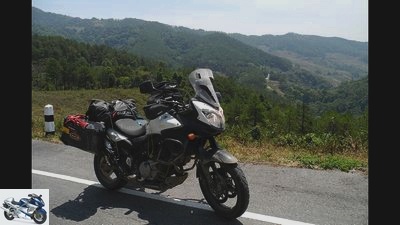
Hofmann
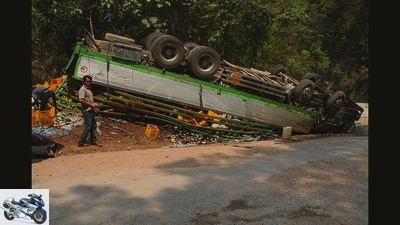
Hofmann

Hofmann

Hofmann
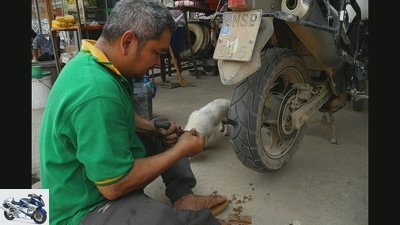
Hofmann
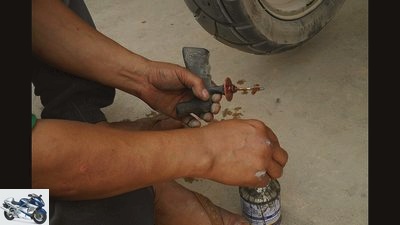
Hofmann
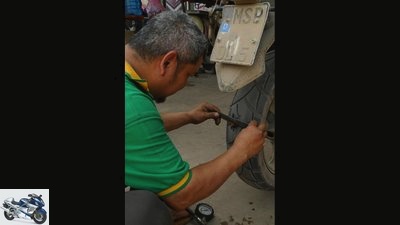
Hofmann
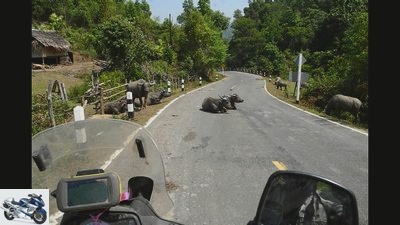
Hofmann
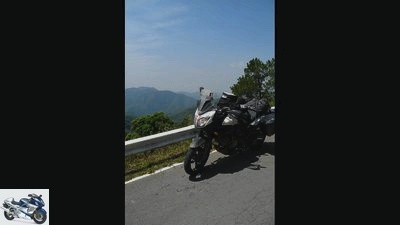
Hofmann
1/9
Both northern Thailand and northern Laos are increasingly becoming an insider tip among motorcycle travelers. Especially in winter when the motorcycle is lonely in the garage, the weather in the region offers the best motorcycle conditions: Pleasant temperatures, sunshine and almost no rain. Both countries spoil you with winding mountain routes, adventure and fantastic food. A neutral comparison is a little difficult for me because I have fallen hopelessly in love with Laos. In the past two years I have driven around 9,000 kilometers through the mountainous landlocked country for three months. I covered a good 4,000 kilometers of it during this trip. In the north of Thailand, I explored around 2,700 kilometers of the small mountain roads around the Golden Triangle in just eight days, which should at least be sufficient for a basic comparison of the two countries.
I have often been asked which of the two countries I would recommend. And, as almost always, my answer was “it depends”. In the following I will describe Laos and Thailand using six categories and then leave the decision up to each of them. There are endless reasons to travel, so that a definitive recommendation on my part would simply be presumptuous. Hopefully my experience will help a bit with the decision and of course I’m happy to answer any questions (www.facebook.com/stevensway.oflife).
Here is my video about Northern Laos:
\ n<div class = \&# 34; v-A_-custom-html v-A_-custom-html – video \ “>\ n<iframe width = \&# 34; 578 \&# 34; height = \&# 34; 325 \&# 34; src = \&# 34; https: //www.youtube.com/embed/HJzd2tlnZiY \&# 34; frameborder = \&# 34; 0 \&# 34; allowfullscreen></ iframe>\ n</ div>\ n</ div>\ n&# 34;,&# 34; consentGroup&# 34;: null}”>
Here is a clip from Northern Thailand:
\ n<div class = \&# 34; v-A_-custom-html v-A_-custom-html – video \ “>\ n<iframe width = \&# 34; 578 \&# 34; height = \&# 34; 325 \&# 34; src = \&# 34; https: //www.youtube.com/embed/oR3uC6yPQCE \&# 34; frameborder = \&# 34; 0 \&# 34; allowfullscreen></ iframe>\ n</ div>\ n</ div>\ n&# 34;,&# 34; consentGroup&# 34;: null}”>
Road quality
The roads in Thailand are in very good condition across the board and some even come close to German standards. Almost every large city can be reached via three- to four-lane highways and even the normal main roads are often two-lane or so wide that at least three vehicles can drive side by side. Even small pass roads are usually free of potholes and easily passable. If you consciously look for it – and I did that quite excessively – you can also explore northern Thailand on tiny single-lane roads and dirt roads. These are of course a bit bumpy to drive, but are still absolutely no problem.
In addition to pure driving pleasure, the well-developed Thai road network also offers greater freedom in route design. You can redirect your day’s stage to side streets and off-road routes carefree, because in case of doubt you can be in the next big city within one to two hours via main roads or highways. This allows you to drive longer daily stages without running the risk of not finding a hotel – Laos definitely does not offer this luxury. Highways? Nothing! For someone who has never been to Laos, the region is hard to imagine. The whole of Northern Laos is mountainous, so that practically every road meanders up the steep gorges in a seemingly endless sea of curves. The main roads are therefore correspondingly small, with only one lane in each direction and a width that hardly allows two buses or trucks.
In addition, there are countless potholes, sand, gravel and gravel, which requires a constant high level of concentration. Correspondingly, you only get ahead slowly. An average of 35 km / h is a realistic guideline when planning a route. If you leave the main roads, you inevitably end up off-road. With a lot of luck on a freshly laid dirt road, usually on a washed-out dirt road or directly on a jungle trail. There are usually bridges only over the largest rivers, so every off-road adventure is garnished with various river crossings and ferries.
This point clearly goes to Thailand
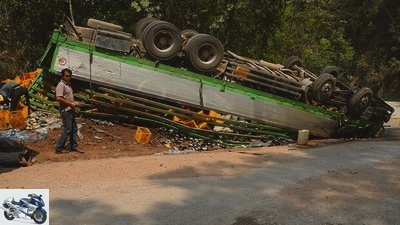
Hofmann
It is not always that easy with the traffic and such sights are unfortunately also part of the common street scene.
traffic
Both in Thailand and in Laos, driving is quite moderate. Thailand has left-hand traffic, in Laos you drive on the right-hand side thanks to French colonial rule. There are hardly any cars on the streets in Laos, so the risk of a traffic accident is very low. However, you have to watch out for animals all the more. Dogs and young pigs in particular are unpredictable and have forced me to screech on the brakes at one point or another.
The significantly higher basic speed on Thai roads in connection with the many times higher number of vehicles naturally entails a certain risk, which is nevertheless very limited. Most of the time, the road rules are observed and even as a motorcycle you usually get enough space and are rarely pushed off the road.
That point goes to Laos
Filling station density
There is no shortage of petrol stations in either Thailand or Laos. You shouldn’t necessarily show your German fueling habits, but look out for a gas station if you could drive 100 km. Even if the fuel gets tight, you can still refuel from barrels or bottles in almost all villages. However, this should only be an emergency solution, as the fuel has often been standing for days and is sometimes heavily contaminated.
draw
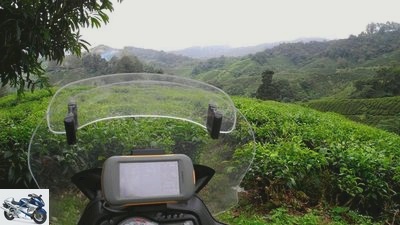
Hofmann
In front of me there are dreamlike primeval forests to be explored.
Adventure factor
Everything that spoke in favor of Thailand under the heading “Road Quality” has a negative effect here. You never have to worry whether you will find a hotel in the evening; I never had to play with the idea of sleeping in the jungle in Thailand. As a motorcyclist, you get noticed, but the locals usually don’t get a lot of enthusiasm. Children hardly wave and even off-road tracks are still in very good condition. Unfortunately, real adventures are rare in Thailand.
Laos, on the other hand, is pure adventure! Even on main streets in every village, children wave and cheerfully shout their “Sabaidee” (hello). And as soon as you switch to smaller roads, even the greatest thirst for adventure will be satisfied. Jungle trails, steep slopes, rocky passages, river crossings, mud, sand and dust – all within 80 kilometers! Anyone who not only wants to unwind kilometers, but also wants to experience stories that he still reports with a shake of the head 20 years later, has to (!) Go to Laos.
A very clear point for Laos.
meal
Laos has some very good dishes, but you can count them on one hand. Phô, my morning soup, is a Vietnamese specialty and many of the main courses were taken over from Thailand. Therefore, boredom comes relatively quickly with Laotian cuisine
The Thai cuisine, on the other hand, is simply outstanding! Diverse, extremely well-versed and always fresh. I’ve been in Thailand for a good nine months now and haven’t tried nearly all of the dishes. If the culinary aspect of motorcycling is important to you, Thailand should be very thick!
A clear point for Thailand
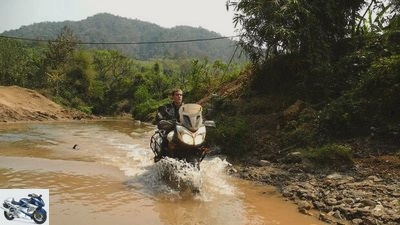
Hoffmann
There are not roads everywhere. Sometimes the path also leads through the cool water.
costs
Both countries don’t really take much from each other. With my way of traveling, Thailand and Laos are exactly the same price; I spent a good 25 euros per day on hotels, food / drink, fuel, admission and all other costs. If you forego a little comfort in the accommodation and save yourself a beer after work, you can get by with 15-20 euros per day.
draw
Ultimately, everyone has to decide for themselves how important the individual categories are. For enthusiastic motorcyclists who are primarily interested in driving enjoyment, Thailand is probably the better option. If you are a little more adventurous and are interested in the cultural and human aspects of the trip, in my opinion you are better off in Laos. I definitely belong to the latter faction and would always be beaming with joy through tiny remote villages in northern Laos on a motorcycle covered in mud. Maybe we will meet on the next tour – I would be happy!
21st March 2013
<!– ESI FOR ads.BannerGallery / irelements / esielement / eyJwYWdlIjoiL3N0YXJ0c2VpdGUvIiwibGF5b3V0IjoiYXJ0aWNsZSIsImVsZW1lbnQiOiJhZHMuQmFubmVyR2FsbGVyeSIsImlyQ29uZmlnIjoiMTQ3Mzc4ODEiLCJwYXJhbXMiOnt9LCJpc01vYmlsZSI6ZmFsc2V9 –> <!– CACHEABLE –>&# 34;,&# 34; rectangle&# 34 ;: “<!–# include virtual = \&# 34 / irelements / esielement / eyJwYWdlIjoiL3N0YXJ0c2VpdGUvIiwibGF5b3V0IjoiYXJ0aWNsZSIsImVsZW1lbnQiOiJhZHMuUmVjdGFuZ2xlR2FsbGVyeSIsImlyQ29uZmlnIjoiMTQ3Mzc4ODEiLCJwYXJhbXMiOnt9LCJpc01vYmlsZSI6ZmFsc2V9 \&# 34; –> <!– ESI FOR ads.RectangleGallery / irelements / esielement / eyJwYWdlIjoiL3N0YXJ0c2VpdGUvIiwibGF5b3V0IjoiYXJ0aWNsZSIsImVsZW1lbnQiOiJhZHMuUmVjdGFuZ2xlR2FsbGVyeSIsImlyQ29uZmlnIjoiMTQ3Mzc4ODEiLCJwYXJhbXMiOnt9LCJpc01vYmlsZSI6ZmFsc2V9 –> <!– CACHEABLE –>&# 34;,&# 34; sky&# 34 ;: “<!–# include virtual = \&# 34 / irelements / esielement / eyJwYWdlIjoiL3N0YXJ0c2VpdGUvIiwibGF5b3V0IjoiYXJ0aWNsZSIsImVsZW1lbnQiOiJhZHMuU2t5R2FsbGVyeSIsImlyQ29uZmlnIjoiMTQ3Mzc4ODEiLCJwYXJhbXMiOnt9LCJpc01vYmlsZSI6ZmFsc2V9 \&# 34; –> <!– ESI FOR ads.SkyGallery / irelements / esielement / eyJwYWdlIjoiL3N0YXJ0c2VpdGUvIiwibGF5b3V0IjoiYXJ0aWNsZSIsImVsZW1lbnQiOiJhZHMuU2t5R2FsbGVyeSIsImlyQ29uZmlnIjoiMTQ3Mzc4ODEiLCJwYXJhbXMiOnt9LCJpc01vYmlsZSI6ZmFsc2V9 –> <!– CACHEABLE –>&# 34;}}” ga-track-vis =”article.gallery.inline.vis” class =”v-A_-article__inline-container”>

Hofmann




9 pictures
Pictures: Journey: From Malaysia to Germany
go to Article
To home page

Hofmann

Hofmann

Hofmann

Hofmann

Hofmann

Hofmann

Hofmann

Hofmann

Hofmann
1/9
After a very relaxing three weeks in Northern Laos, my visa slowly but surely expired and I had to do what I otherwise always consistently avoid: organize and create a schedule.
If you travel to Thailand by land, you only get a 15-day visa, which put me under time pressure. To ensure that my Suzuki is safely delivered from Bangkok to Kathmandu, I have to be in the Thai capital a week before departure and therefore only have eight days left for northern Thailand. So, of all places, I have to travel quickly to the region with the most spectacular roads. In order to still get a good impression of this part of the country (and to be able to compare it with northern Laos in a later blog entry), I will spend seven of the eight days on my DL650 for seven to ten hours.
This marathon started at 7:30 am in Luang Prabang, which I left in the direction of Udomxai to get to Pua via Pak Beng and the Nam Nguen border crossing. I had made up my mind to cover the 500 kilometers, which is utopian for Laotian road conditions, on this day. The first 100 kilometers to Pak Mong went by in a flash and gave me a perfect start; the road is very little used, well developed and relatively straight.
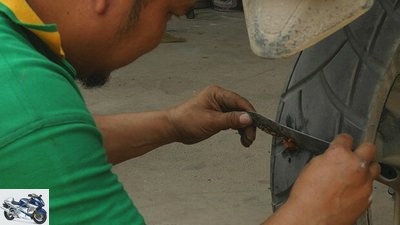
Hofmann
Patching a tire in Laos is an experience.
The bad thing wasn’t necessarily the road damage itself, but the amateurish repair work. Some of the largest potholes were simply filled in with loose sand and coarse stones that had spread over the entire roadway over time. After each truck it took about two minutes until the thick dust had cleared a bit and you could continue driving safely without honking wildly. At about 30 km of this ordeal, what I had been waiting for two months happened: my first puncture. Today of all days I thought to myself. But what is a good time for a breakdown??
Fortunately, I only cut the tire on a small piece of metal so that there was enough air pressure to cover the last 40 kilometers to Udomxai while driving slowly. Each of the tiny workshops required an acting masterpiece to make them understand that I don’t have a tube in the tire and that it therefore doesn’t have to be removed from the rim. In the end, I was lucky in the fifth shop. After some back and forth, he realized the problem and was able to fix my tire in just two minutes. I had already planned to buy a breakdown repair kit in Chiang Mai anyway and consider this incident as a wake-up call and valuable object lesson at the same time.
This incident set me back a precious hour in my schedule. So on the 130 kilometers to Pak Beng I had to speed up, but I wasn’t allowed to overdo it on the mountain roads. One fall and the whole time gain – and possibly my further journey – is gone. Shortly after 3 p.m. I arrived at the ferry station and was very lucky. An almost fully loaded car ferry still had space for me and started to cross the Mekong straight away. That saved me not only a good 20 minutes of waiting time, but also the rickety wooden bridges of the motorcycle ferries, which are simply too small for my Suzuki.
I took courage and for the first time really believed that I could do it. But then I had made the calculation without the Laotian border guards. At around 3:45 p.m. I was in Nam Ngeun on the border with Thailand, had already stamped out and only had to go through customs. I thought it was a formality, as the customs officials simply waved me through when I entered the country and neither asked for nor issued any documents. Unfortunately, regulations in Laos are obviously not implemented in a uniform manner. My friendly but determined controller wanted to get some kind of form, which of course I couldn’t show. I encouraged him to do something good, showed him my passport again and sold him my vehicle registration document as a German import document. Apparently that was enough for him, because he gave me my passport back and let me leave for Thailand without any complaints.
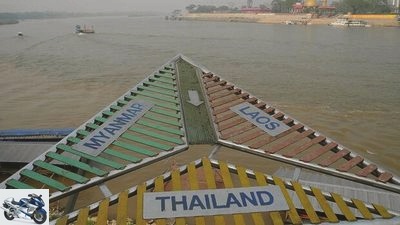
Hofmann
The three-country corner: Laos, Thailand and Myanmar.
It was much more professional there. After two minutes, my passport was stamped and at the customs station I was asked to go to an air-conditioned office to issue me with a temporary import document. At 5 p.m. I was finally finished, but I also had to accept that I would never finish my originally planned route before dark. And so I decided on an alternative, shorter route, which ultimately led me to a luxurious – and amazingly cheap – hotel in Pua shortly after 6 p.m. and a more than 10 hour drive.
For the next day, I cobbled together a fantastic 500-kilometer mountain tour over tiny streets and country lanes with the Garmin BaseCamp software. And so I was already sitting on my Suzuki at 8:00 am, driving a small mountain road towards the west, when it suddenly ended after 35 kilometers. From this point on, my Montana 600 indicated the road as “unpaved”, which is an inadmissible glossing over. Even the 200 meters that I could see were extremely steep, sandy and had deep ruts. From Laos I still had an impressive memory of how treacherous this mixture is, which is why I turned around and drove around the piece on road 1148. A good decision, as it should quickly turn out to be.

Hofmann
Unfortunately, such accidents are not uncommon on the streets of Laos.
With almost no oncoming traffic, I drove a good 1.5 hours through dreamy mountainous landscapes. One curve lined up after the next, so that you never really got out of the lean position; a feeling like skiing in the best conditions on the slopes. And that was just the beginning of this outstanding day of driving! From then on it went non-stop on mountain roads for about 400 kilometers directly along the Laotian and later Burmese border. Coffee and tea were grown on the slopes, which were then sold in luxury resorts at the top of the pass. Unfortunately, the offer was primarily aimed at wealthy Thai tourists and far exceeded my budget. And so I contented myself with the spectacular streets and a spicy noodle soup at a small street stall.
After about six hours I reached the Golden Triangle (Laos – Thailand – Myanmar) and continued my way from there along the Burmese border. Here the mountain passes became even steeper, narrower and more deserted. There are actually only three reasons to drive these tiny paths: You live there, you drive the street for sheer pleasure or you smuggle. The military presence in this region was correspondingly strong. Every 10-20 kilometers I had to stop at a military checkpoint, explain where I was going and sometimes pull out my passport. Fortunately, the soldiers were very nice across the board and I obviously didn’t quite fit into their smuggler profile, so they usually gave me a friendly smile and opened the barrier after two minutes. I just couldn’t get enough of these breathtaking mountain roads! Although I had been in the saddle for more than eight hours, I continued to extend the stage until the setting sun finally brought me back to spheres close to the earth.
Still intoxicated from the wild cornering, I headed for a small village where Feirn’s family had invited me to their home. There I would face the next challenge and go hunting with Feirn’s father. Shortly before 6:00 p.m. I reached the idyllic village, unloaded my luggage with the last rays of sunshine and was greeted directly with a Thai whiskey – it couldn’t be better!
After a quick shower, the entire family had gathered around a richly laid table. Wonderfully fragrant northern Thai dishes were waiting for me: pork in deep-fried tea leaves, salad made from beef, blood and onions, various soups, rice and of course more Thai whiskey. It tasted really good! Tired, fat, a little tipsy and overjoyed, I fell into bed at 9:00 p.m. and fell asleep like a rock. What a great start to my Thailand marathon! If the other days are only half as nice, it could be an absolute highlight of my trip.
13th March 2013
<!– ESI FOR ads.BannerGallery / irelements / esielement / eyJwYWdlIjoiL3N0YXJ0c2VpdGUvIiwibGF5b3V0IjoiYXJ0aWNsZSIsImVsZW1lbnQiOiJhZHMuQmFubmVyR2FsbGVyeSIsImlyQ29uZmlnIjoiMTQ3Mzc4ODEiLCJwYXJhbXMiOnt9LCJpc01vYmlsZSI6ZmFsc2V9 –> <!– CACHEABLE –>&# 34;,&# 34; rectangle&# 34 ;: “<!–# include virtual = \&# 34 / irelements / esielement / eyJwYWdlIjoiL3N0YXJ0c2VpdGUvIiwibGF5b3V0IjoiYXJ0aWNsZSIsImVsZW1lbnQiOiJhZHMuUmVjdGFuZ2xlR2FsbGVyeSIsImlyQ29uZmlnIjoiMTQ3Mzc4ODEiLCJwYXJhbXMiOnt9LCJpc01vYmlsZSI6ZmFsc2V9 \&# 34; –> <!– ESI FOR ads.RectangleGallery / irelements / esielement / eyJwYWdlIjoiL3N0YXJ0c2VpdGUvIiwibGF5b3V0IjoiYXJ0aWNsZSIsImVsZW1lbnQiOiJhZHMuUmVjdGFuZ2xlR2FsbGVyeSIsImlyQ29uZmlnIjoiMTQ3Mzc4ODEiLCJwYXJhbXMiOnt9LCJpc01vYmlsZSI6ZmFsc2V9 –> <!– CACHEABLE –>&# 34;,&# 34; sky&# 34 ;: “<!–# include virtual = \&# 34 / irelements / esielement / eyJwYWdlIjoiL3N0YXJ0c2VpdGUvIiwibGF5b3V0IjoiYXJ0aWNsZSIsImVsZW1lbnQiOiJhZHMuU2t5R2FsbGVyeSIsImlyQ29uZmlnIjoiMTQ3Mzc4ODEiLCJwYXJhbXMiOnt9LCJpc01vYmlsZSI6ZmFsc2V9 \&# 34; –> <!– ESI FOR ads.SkyGallery / irelements / esielement / eyJwYWdlIjoiL3N0YXJ0c2VpdGUvIiwibGF5b3V0IjoiYXJ0aWNsZSIsImVsZW1lbnQiOiJhZHMuU2t5R2FsbGVyeSIsImlyQ29uZmlnIjoiMTQ3Mzc4ODEiLCJwYXJhbXMiOnt9LCJpc01vYmlsZSI6ZmFsc2V9 –> <!– CACHEABLE –>&# 34;}}” ga-track-vis =”article.gallery.inline.vis” class =”v-A_-article__inline-container”>

Hoffmann




9 pictures
Pictures: Journey: From Malaysia to Germany
go to Article
To home page
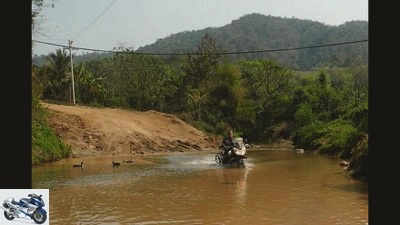
Hoffmann
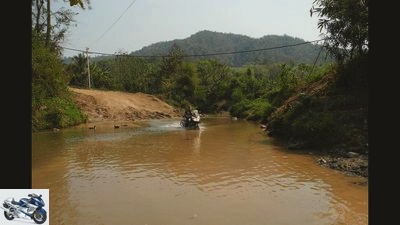
Hoffmann

Hoffmann
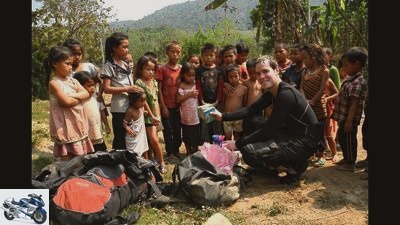
Hoffmann
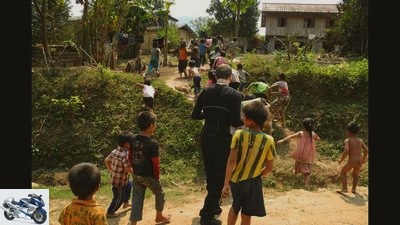
Hoffmann
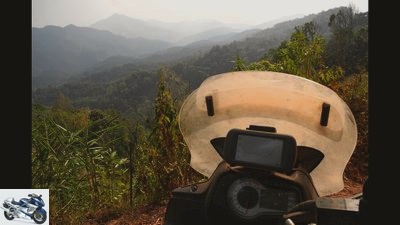
Hoffmann
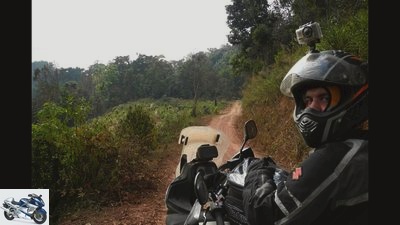
Hoffmann
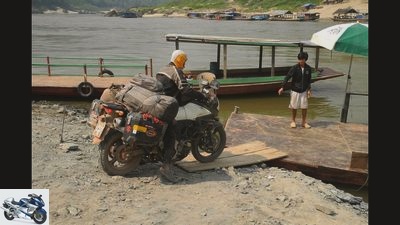
Hoffmann
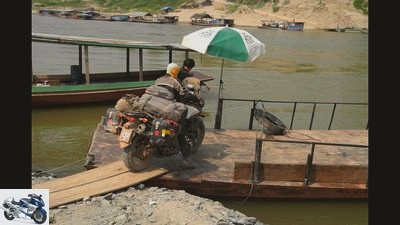
Hoffmann
1/9
Luang Prabang, Laotian capital during French colonial rule, is a UNESCO World Heritage Site and has more than earned this award. Tiny alleys and numerous temples invite you to explore the colonial-style city. Less culture-savvy visitors can enjoy massages, excellent Laotian food or simply an ice-cold Beerlao right on the banks of the Mekong. I, on the other hand, spent most of the time – as always when I’m in Luang Prabang – in the Cafe Ban Vat Sen. The old French cafe is right across from a school, plays quiet jazz in the background and serves the best baguette in town. Break the still hot bread into large pieces, spread generously with cream cheese, drink espresso and watch the schoolchildren play football – wonderful!
The next day I resisted the French temptation and took a small day tour to the nearby Tat Kuang Si waterfall. The almost 30 kilometers were very winding, as practically everywhere in Laos, but not particularly spectacular and quite demanding due to an atypical obstacle: water buffalo and cows can be found everywhere on Laotian roads. They are not overly dangerous as they move very predictably. Once they have started running, they do not stop and neither change their speed nor direction.

Hoffmann
Steven’s Way of Life: Halfway Around the World by Motorbike, Part 8.
Dogs and pigs are even more common – especially in northern Laos. Young animals in particular are often unpredictable and have already forced me to take one or two full brakes. Ultimately, natural selection ensures that only the most sensible animals live to an advanced age, so adult pigs and dogs are not a cause for concern. Chickens, geese and ducks surprisingly run headless like chickens on the street; what exactly they are up to only they know. However, they let themselves be scared away by boldly honking their horns, which significantly reduces their potential for danger.
Fortunately, you only meet tourists on scooters in a few places – Luang Prabang is one of them. With their driving style, they seem to have rented an aura of invulnerability at the same time as the mobile pedestal. Flip-flops, T-shirts, shorts and an extra dose of optimism meet your need for security. Many naively assume that there are no traffic rules and thus disregard the much more subtle behaviors on Asian roads (e.g. honk once = I’m behind you, drive on exactly; honk twice = I want to overtake, pull over; honk three times = you are doing something fundamentally wrong …). Not only are they unpredictable, they also usually react incorrectly to the horn signals. In this way they become a real source of danger, about which even the otherwise patient Laotians are fervently upset. Only one thing helps here: brake, keep a lot of distance when overtaking and leave the tourist region as quickly as possible.
That’s exactly what I did two days later when I drove to Pak Beng, a small town near the Thai border. Rainer Wolf from R.S. Wolf in Lampertheim was so generous to give me money for school supplies that I should distribute in remote villages. And so I started looking for the ferry station across the Mekong with what felt like 10 kilograms of notebooks, pencils, crayons, rulers, pens, erasers and sharpeners. I quickly found what I was looking for and after a short wait (Asian ferries usually do not go according to the schedule, but when they are full) safely on the other bank of the river. The contrast between tourism and ‘real’ Laos has seldom been as clear as it is here. On one side of the Mekong, the pulsating world cultural heritage Luang Prabang with its countless cafes, restaurants and temples; and on the other bank I stood with my Suzuki DL650 in the middle of a tiny village on a sandy dirt road.
Judging by the reaction of the children, no Westerner has been on this street for a long time. As soon as they could even get a glimpse of my motorcycle from afar, all the village children ran out of their houses to greet me waving happily with a “Sabaidee”. On my first river crossing, this enthusiasm even saved me a lot of work. As always, I unbuckled my panniers and waded through the knee-deep river to find the best route. While I was still trudging a little awkwardly towards the bank, the children got on my aluminum suitcases and carried them across the river in twos. About 15 pairs of curious eyes then watched my every movement, which did not necessarily increase my confidence. Fortunately, apart from a small rock in the middle of the river, everything went according to plan and I made it safely to the other bank.
I quickly decided to distribute the first half of the school supplies in this village because it was just perfect: Very remote, relatively poor, many enthusiastic children and a small elementary school right behind a small cluster of huts. The initial reluctance quickly turned into euphoria when the children realized that I would give them the many colorful packages. They excitedly accompanied me to school, where I hired a slightly older girl to distribute the school supplies fairly. When I waved goodbye to the children a few minutes later, fully dressed, I saw that each of them is proudly holding a notebook and pens in their hand and smiling gratefully at me. I would like to thank Rainer Wolf from R.S. Wolf in Lampertheim, who made this great experience possible for me through his donation.

Hoffmann
Steven’s Way of Life: Halfway Around the World by Motorbike, Part 8.
After this village, the path marked as a paved main road on my map became more and more hair-raising. River crossings, extremely steep climbs and descents and increasingly deep sand. I can really live with any underground; I often prefer clay, dust, gravel and superficial sand to asphalt. On the other hand, deep sand on steep descents is definitely not. I tried in vain in first gear with the rear brake depressed to avoid the deep ruts of the trucks (often hidden by the sand), but still had to give in to gravity. Unfortunately, I couldn’t enjoy the breathtakingly beautiful landscape in these road conditions. Every spark of concentration was for the next 100 meters, which I fought my way towards Pak Beng. However, it quickly became apparent that I would not reach my goal for the day and so from around 5 p.m. I looked for a village where I could spend the night. When the sun was already setting, I spotted a large collection of huts around 5.30 p.m. and stopped in front of a gas station (= two petrol barrels), dusty and sweaty from head to toe. With hands and feet I explained my problem to the somewhat perplexed gas station attendant, who led me to his house beaming with joy. There was a large common room in which I was allowed to sleep on some rice straw mats. On my way to the ‘shower’ (= river) a couple of construction workers shared their dinner with me and poured me one Lao Lao (rice schnapps) after the other. Overjoyed with so much hospitality, I provided the children in the common room in front of the TV with watermelon and chips and my hosts with enough beerlao in the evening. A great experience!
After a cold night I said goodbye to the nice family and took up the fight again with the dirt road to Pak Beng. This second lap was victorious after only 1.5 hours with a technical knockout: The dirt road turned into a wonderfully paved road that led me to Pak Beng and even 150 km further to Oudomxai. The only remaining obstacle was a very rickety ferry, the access ramp of which was just a few boards nailed together. The entry was still quite problem-free, but the descent on the other bank was adventurous. Now I had to cross the threshold to the jetty slightly uphill with practically no attempt, bridge about a meter between the boat and land and then master the sandy ascent to the road. After some hesitation and two attempts, I took heart, accelerated and reached the tarmac, full of adrenaline. It is precisely for these moments that I travel the world with my DL650. Absolute freedom and independence paired with endless adventures. More please!
Dogs and pigs are even more common – especially in northern Laos. Young animals in particular are often unpredictable and have already forced me to take one or two full brakes. Ultimately, natural selection ensures that only the most sensible animals live to an advanced age, so adult pigs and dogs are not a cause for concern. Chickens, geese and ducks surprisingly run headless like chickens on the street; what exactly they are up to only they know. However, they let themselves be scared away by boldly honking their horns, which significantly reduces their potential for danger.
Fortunately, you only meet tourists on scooters in a few places – Luang Prabang is one of them. With their driving style, they seem to have rented an aura of invulnerability at the same time as the mobile pedestal. Flip-flops, T-shirts, shorts and an extra dose of optimism meet your need for security. Many naively assume that there are no traffic rules and thus disregard the much more subtle behaviors on Asian roads (e.g. honk once = I’m behind you, drive on exactly; honk twice = I want to overtake, pull over; honk three times = you are doing something fundamentally wrong …). Not only are they unpredictable, they also usually react incorrectly to the horn signals. In this way they become a real source of danger, about which even the otherwise patient Laotians are fervently upset. Only one thing helps here: brake, keep a lot of distance when overtaking and leave the tourist region as quickly as possible.

Hoffmann
Steven’s Way of Life: Halfway Around the World by Motorbike, Part 8.
That’s exactly what I did two days later when I drove to Pak Beng, a small town near the Thai border. Rainer Wolf from R.S. Wolf in Lampertheim was so generous to give me money for school supplies that I should distribute in remote villages. And so I started looking for the ferry station across the Mekong with what felt like 10 kilograms of notebooks, pencils, crayons, rulers, pens, erasers and sharpeners. I quickly found what I was looking for and after a short wait (Asian ferries usually do not go according to the schedule, but when they are full) safely on the other bank of the river. The contrast between tourism and ‘real’ Laos has seldom been as clear as it is here. On one side of the Mekong, the pulsating world cultural heritage Luang Prabang with its countless cafes, restaurants and temples; and on the other bank I stood with my Suzuki DL650 in the middle of a tiny village on a sandy dirt road.
Judging by the reaction of the children, no Westerner has been on this street for a long time. As soon as they could even get a glimpse of my motorcycle from afar, all the village children ran out of their houses to greet me waving happily with a “Sabaidee”. On my first river crossing, this enthusiasm even saved me a lot of work. As always, I unbuckled my panniers and waded through the knee-deep river to find the best route. While I was still trudging a little awkwardly towards the bank, the children got on my aluminum suitcases and carried them across the river in twos. About 15 pairs of curious eyes then watched my every movement, which did not necessarily increase my confidence. Fortunately, apart from a small rock in the middle of the river, everything went according to plan and I made it safely to the other bank.
I quickly decided to distribute the first half of the school supplies in this village because it was just perfect: Very remote, relatively poor, many enthusiastic children and a small elementary school right behind a small cluster of huts. The initial reluctance quickly turned into euphoria when the children realized that I would give them the many colorful packages. They excitedly accompanied me to school, where I hired a slightly older girl to distribute the school supplies fairly. When I waved goodbye to the children a few minutes later, fully dressed, I saw that each of them is proudly holding a notebook and pens in their hand and smiling gratefully at me. I would like to thank Rainer Wolf from R.S. Wolf in Lampertheim, who made this great experience possible for me through his donation.
After this village, the path marked as a paved main road on my map became more and more hair-raising. River crossings, extremely steep climbs and descents and increasingly deep sand. I can really live with any underground; I often prefer clay, dust, gravel and superficial sand to asphalt. Deep sand on steep descents, on the other hand, is definitely not. I tried in vain in first gear with the rear brake depressed to avoid the deep ruts of the trucks (often hidden by the sand), but still had to give in to gravity. Unfortunately, I couldn’t enjoy the breathtakingly beautiful landscape in these road conditions. Every spark of concentration was for the next 100 meters, which I fought my way towards Pak Beng. However, it quickly became apparent that I would not reach my destination for the day and so from around 5 p.m. I looked for a village where I could spend the night. When the sun was already setting, I spotted a large collection of huts around 5.30 p.m. and stopped in front of a gas station (= two petrol barrels), dusty and sweaty from head to toe. With hands and feet I explained my problem to the somewhat perplexed gas station attendant, who led me to his house beaming with joy. There was a large common room in which I was allowed to sleep on some rice straw mats. On my way to the ‘shower’ (= river) a couple of construction workers shared their dinner with me and poured me one Lao Lao (rice schnapps) after the other. Overjoyed with so much hospitality, I provided the children in the common room in front of the TV with watermelon and chips and my hosts with enough beerlao in the evening. A great experience!
After a cold night I said goodbye to the nice family and took up the fight again with the dirt road to Pak Beng. This second lap was victorious after only 1.5 hours with a technical knockout: The dirt road turned into a wonderfully paved road that led me to Pak Beng and even 150 km further to Oudomxai. The only remaining obstacle was a very rickety ferry, the access ramp of which was just a few boards nailed together. The entry was still quite problem-free, but the descent on the other bank was adventurous. Now I had to cross the threshold to the jetty slightly uphill with practically no attempt, bridge about a meter between the boat and land and then master the sandy ascent to the road. After some hesitation and two attempts, I took heart, accelerated and reached the tarmac, full of adrenaline. It is precisely for these moments that I travel the world with my DL650. Absolute freedom and independence paired with endless adventures. More please!
4th March 2013
<!– ESI FOR ads.BannerGallery / irelements / esielement / eyJwYWdlIjoiL3N0YXJ0c2VpdGUvIiwibGF5b3V0IjoiYXJ0aWNsZSIsImVsZW1lbnQiOiJhZHMuQmFubmVyR2FsbGVyeSIsImlyQ29uZmlnIjoiMTQ3Mzc4ODEiLCJwYXJhbXMiOnt9LCJpc01vYmlsZSI6ZmFsc2V9 –> <!– CACHEABLE –>&# 34;,&# 34; rectangle&# 34 ;: “<!–# include virtual = \&# 34 / irelements / esielement / eyJwYWdlIjoiL3N0YXJ0c2VpdGUvIiwibGF5b3V0IjoiYXJ0aWNsZSIsImVsZW1lbnQiOiJhZHMuUmVjdGFuZ2xlR2FsbGVyeSIsImlyQ29uZmlnIjoiMTQ3Mzc4ODEiLCJwYXJhbXMiOnt9LCJpc01vYmlsZSI6ZmFsc2V9 \&# 34; –> <!– ESI FOR ads.RectangleGallery / irelements / esielement / eyJwYWdlIjoiL3N0YXJ0c2VpdGUvIiwibGF5b3V0IjoiYXJ0aWNsZSIsImVsZW1lbnQiOiJhZHMuUmVjdGFuZ2xlR2FsbGVyeSIsImlyQ29uZmlnIjoiMTQ3Mzc4ODEiLCJwYXJhbXMiOnt9LCJpc01vYmlsZSI6ZmFsc2V9 –> <!– CACHEABLE –>&# 34;,&# 34; sky&# 34 ;: “<!–# include virtual = \&# 34 / irelements / esielement / eyJwYWdlIjoiL3N0YXJ0c2VpdGUvIiwibGF5b3V0IjoiYXJ0aWNsZSIsImVsZW1lbnQiOiJhZHMuU2t5R2FsbGVyeSIsImlyQ29uZmlnIjoiMTQ3Mzc4ODEiLCJwYXJhbXMiOnt9LCJpc01vYmlsZSI6ZmFsc2V9 \&# 34; –> <!– ESI FOR ads.SkyGallery / irelements / esielement / eyJwYWdlIjoiL3N0YXJ0c2VpdGUvIiwibGF5b3V0IjoiYXJ0aWNsZSIsImVsZW1lbnQiOiJhZHMuU2t5R2FsbGVyeSIsImlyQ29uZmlnIjoiMTQ3Mzc4ODEiLCJwYXJhbXMiOnt9LCJpc01vYmlsZSI6ZmFsc2V9 –> <!– CACHEABLE –>&# 34;}}” ga-track-vis =”article.gallery.inline.vis” class =”v-A_-article__inline-container”>
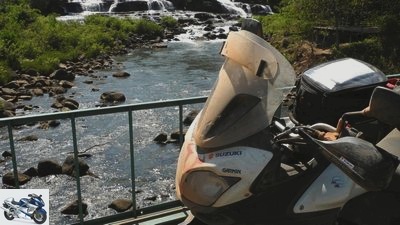




7th pictures
Pictures: Journey: From Malaysia to Germany
go to Article
To home page
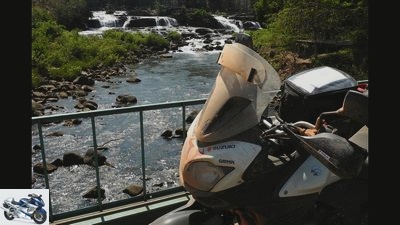
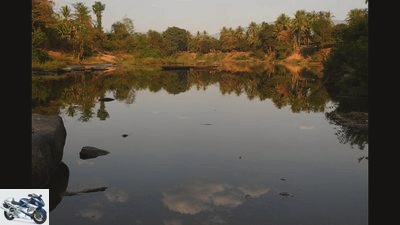
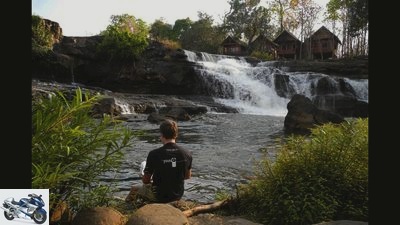
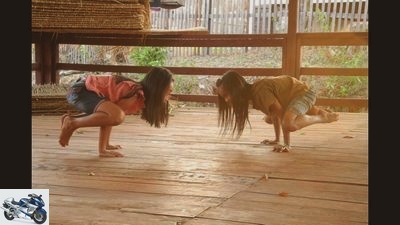
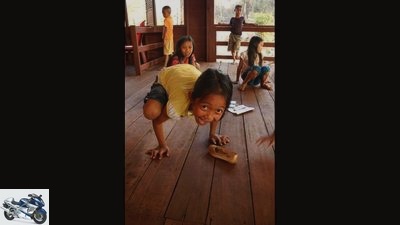
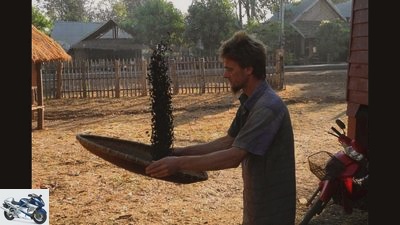
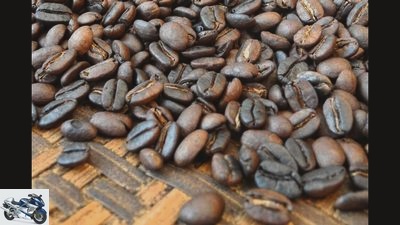
1/7
See a crisis as an opportunity. This meaningless sentence shell is often underpinned with a reference to supposedly identical Chinese characters. In practice, the saying only too often serves as a justification to hold on to one’s post after serious mistakes. In Laos, on the other hand, the two concepts actually converge remarkably, as I was able to experience impressively in my first ten days.
After the almost superhuman exertion of the Attapeu Trail (described in the last blog entry), the next day I drove to the idyllic village of Sen Vang, located by the Tad Lo waterfall. I was there a year ago, but after only one night I left, exasperated by the tourist crowds. This time I only returned because I heard from an Austrian who freshly roasts the first-class coffee from the neighboring Bolaven Plateau every day according to Ethiopian tradition. An absolute highlight for a coffee lover like me. I quickly found Emmanuel (‘M’ for short) and to my surprise found that there were far fewer tourists in the village than last year. M has signed a contract with the Laotian government that guarantees him a considerable piece of land free of rent and tax as long as he teaches English to the village children in a small school.
What a coincidence! If I hadn’t found sponsors for my motorcycle tour, I would have lived as an English teacher in a small Laotian village for eight months. Happy to have the chance to combine both things, I supported the class every evening as much as I could, handed out some pens that Suzuki had given me and in my free time also practiced the few bits of English they knew with the village children with the village children. In return, they not only taught me some Lao, but also gratefully welcomed me into their village community. Whenever I (respectfully called “Teacher Steven”) strolled through the village streets, students would greet me and take the opportunity to improve their English. We reeled off the familiar greeting phrases and carefully I tried to teach them a new word or two in a dialogue – each time accompanied by a feeling of happiness when they still knew it the next day.
On the second evening I unfortunately had to pay tribute to the jungle strain. After being invited to dinner and the subsequent rice festival in the temple, I got a high fever and had to spend most of the next two days in my bungalow. All further travel plans were put on hold until I fully recovered. Asian streets offer almost limitless adventures, but also require a high level of concentration in order to be able to tell about them later. Weakened by a fever, even a short day’s stage is unthinkable.
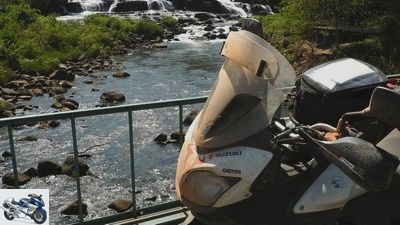
Sen Vang is idyllically located directly at the Tad Lo waterfall.
I am never sick; I hate it to be ill. Whenever I’m sick, I feel sorry for myself around the clock and struggle with my unfortunate fate. Not so in Sen Vang. After the fever was more or less under control after two days, I enjoyed the peaceful village atmosphere, spent time with the locals and did my best to teach the children some English. Happy about my fever, I spent almost a week in Sen Vang, watching everyday life in the village and wondering why the people (especially the children) are so happy. The thoughts of last year came back: What makes you so happy? What do you really need to be happy? I show them what they will never have and so destroy a part of their world?
Difficult questions to which I still haven’t found adequate answers. Before my thoughts completely paralyzed me, I said goodbye to all the children and made my way to Nahin. Actually, I wanted to cover the 550 kilometers on small off-road slopes, but with a view to my feverish illness I decided on the boring route 9: 550 kilometers straight through dusty, relentless heat. Ironically, I still experienced a setback while unloading my luggage, suddenly had an extremely high fever and could barely stand on my feet. 17 hours of sleep and a few ibuprophs later, I was sitting in the waiting room of a little doctor. I didn’t really know how trustworthy the practice was, as it was a bakery, restaurant and corner shop all at the same time.
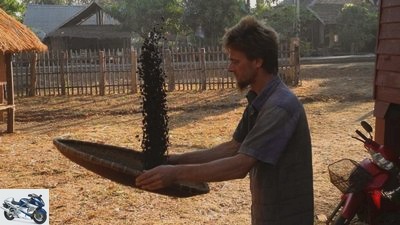
An absolute highlight for a coffee lover like me.
At least I was able to sweeten the waiting time with shrimp chips and fresh baguette. Only a few minutes later, a friendly master baker / shopkeeper / cook / doctor asked me into his treatment room, carried out a rapid malaria test and found that I still had a temperature of 39.2 ° despite several Ibuprops. The evening before, it must have been well over 40 °. Fortunately, the rapid test is negative, so the doctor prescribes paracetamol tablets and a paracetamol syringe, which I am anything but happy about. In Indonesia I experienced hair-raising hygiene standards in hospitals and quite frankly asked the doctor to show me the needles. When I saw the original packaging, I consented with relief and tried, with a wink, to appease the somewhat piqued doctor with a hint of my German obsession with order.
Obviously successful, since he offered to use his laptop later to send a few emails. After a few hours of sleep, I felt much better and went to the practice of my new friend, which was right next to his private house. Before I could even open his Laoptop, he invited me to enjoy a typical Laotian dinner with his entire family. Unfortunately, my appetite was still very limited, so I could only try one courtesy serving of each of the six dishes. We talked about my trip, joked and got on really well – it is precisely for these moments that I drive around the world.
Crisis or opportunity?
Without my fever, I would have left Sen Vang after a day or two, would not have taught in the small school, would not have been lovingly accepted into the village community, would not have eaten with families and would not have seen the rice festival. I would never have set foot in the multifunctional practice and would have missed the valuable insight into Laotian culture here too. When I enjoy a sumptuous feast with the family of my doctor, I have to smile at my cynical worldview. Crisis as an opportunity – in Laos this is more than just an empty phrase. Perhaps it is even a possible explanation for the numerous questions that still go through my head without being answered.
I remain with adventurous greetings until the next crisis!
February 26, 2013
<!– ESI FOR ads.BannerGallery / irelements / esielement / eyJwYWdlIjoiL3N0YXJ0c2VpdGUvIiwibGF5b3V0IjoiYXJ0aWNsZSIsImVsZW1lbnQiOiJhZHMuQmFubmVyR2FsbGVyeSIsImlyQ29uZmlnIjoiMTQ3Mzc4ODEiLCJwYXJhbXMiOnt9LCJpc01vYmlsZSI6ZmFsc2V9 –> <!– CACHEABLE –>&# 34;,&# 34; rectangle&# 34 ;: “<!–# include virtual = \&# 34 / irelements / esielement / eyJwYWdlIjoiL3N0YXJ0c2VpdGUvIiwibGF5b3V0IjoiYXJ0aWNsZSIsImVsZW1lbnQiOiJhZHMuUmVjdGFuZ2xlR2FsbGVyeSIsImlyQ29uZmlnIjoiMTQ3Mzc4ODEiLCJwYXJhbXMiOnt9LCJpc01vYmlsZSI6ZmFsc2V9 \&# 34; –> <!– ESI FOR ads.RectangleGallery / irelements / esielement / eyJwYWdlIjoiL3N0YXJ0c2VpdGUvIiwibGF5b3V0IjoiYXJ0aWNsZSIsImVsZW1lbnQiOiJhZHMuUmVjdGFuZ2xlR2FsbGVyeSIsImlyQ29uZmlnIjoiMTQ3Mzc4ODEiLCJwYXJhbXMiOnt9LCJpc01vYmlsZSI6ZmFsc2V9 –> <!– CACHEABLE –>&# 34;,&# 34; sky&# 34 ;: “<!–# include virtual = \&# 34 / irelements / esielement / eyJwYWdlIjoiL3N0YXJ0c2VpdGUvIiwibGF5b3V0IjoiYXJ0aWNsZSIsImVsZW1lbnQiOiJhZHMuU2t5R2FsbGVyeSIsImlyQ29uZmlnIjoiMTQ3Mzc4ODEiLCJwYXJhbXMiOnt9LCJpc01vYmlsZSI6ZmFsc2V9 \&# 34; –> <!– ESI FOR ads.SkyGallery / irelements / esielement / eyJwYWdlIjoiL3N0YXJ0c2VpdGUvIiwibGF5b3V0IjoiYXJ0aWNsZSIsImVsZW1lbnQiOiJhZHMuU2t5R2FsbGVyeSIsImlyQ29uZmlnIjoiMTQ3Mzc4ODEiLCJwYXJhbXMiOnt9LCJpc01vYmlsZSI6ZmFsc2V9 –> <!– CACHEABLE –>&# 34;}}” ga-track-vis =”article.gallery.inline.vis” class =”v-A_-article__inline-container”>
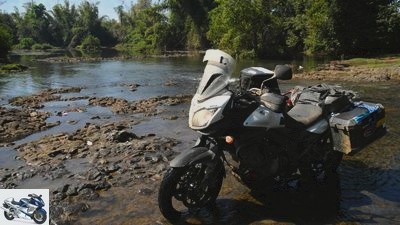
Hofmann




9 pictures
Pictures: Journey: From Malaysia to Germany
go to Article
To home page

Hofmann
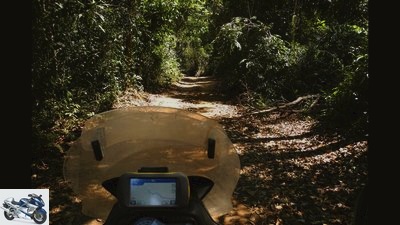
Hofmann
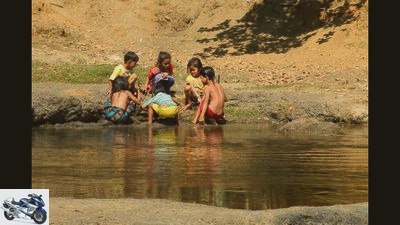
Hofmann
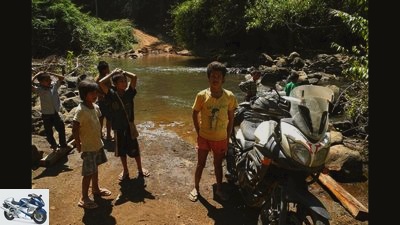
Hofmann

Hofmann
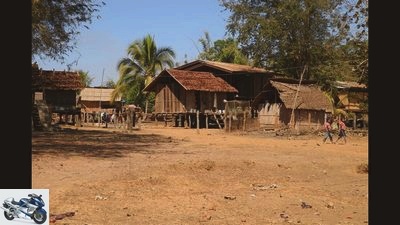
Hofmann
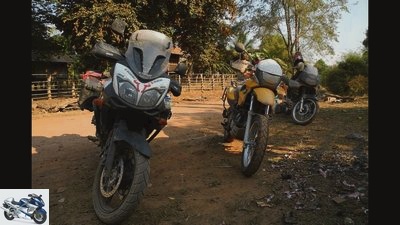
Hofmann

Hofmann
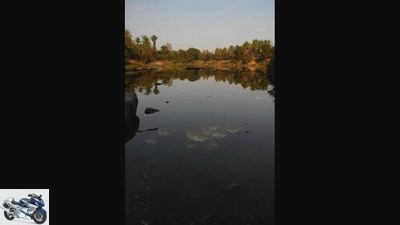
Hofmann
1/9
After just 10 minutes, I was through the Cambodian-Laotian border with my motorcycle without paying a single USD bribe. A surprisingly unproblematic start to my journey into the past. A year ago I bought a small motorcycle in the Lao capital Vientiane and drove about 5,000 km across the country for two months. During this time I discovered my enthusiasm for this form of travel and also made my first plans for the road trip I am on now.
How could a visit to Laos start differently than with a hot bowl of Phoe, an actually Vietnamese noodle soup, which has meanwhile established itself as breakfast throughout Southeast Asia. A wonderfully fragrant chicken broth with whitish-glassy rice noodles and pork or chicken. In addition, a basket of fresh mint and lettuce leaves as well as the almost endless seasoning options: lime, sugar, chilli, salt, pepper, shrimp sauce, fish sauce, Maggi, chilli paste … As is so often the case, the entire family of the soup cook quickly gathers to watch me eat and I felt like shouting “Sabaidee” (hello) every five seconds. I love this country!
The next morning I left Pakse before 8 a.m. to explore an alternative off-road route to Attapeu, about 120 km away. My information on this route was extremely thin: “No bridges; only drivable in the dry season ”(road map) and“ It’s doable, I think ”(English motorcyclist); I didn’t know any more. As usual, I packed a 1.5 liter bottle of water and after about 45 km turned left into a well-developed dirt road. But already after about five kilometers the impending disaster announced itself: The road became narrower and narrower and consisted practically only of potholes, sand and large slabs of rock. After a good 15 kilometers, the jungle was in sight and I took a last short drink break right in front of a school yard.
As hoped, all the children immediately ran to the street to marvel at the big motorcycle and the sweating “Falang” (Westerner). Of course I wanted to take photos of the curious children, which is a bit complicated in Laos. Children are very photo shy and have to be convinced with a lot of tact. So I first took a photo from about 10 meters away, after which half of the children ran away. Then I knelt by the remaining children and showed them the screen. As a rule, there are no mirrors in Laotian households, which is why the children gratefully accept every opportunity to look at themselves and their friends. Immediately enthusiasm broke out and within seconds more than 20 children surrounded me, all of whom wanted to take a photo with me. A quarter of an hour later the school gong ended the increasingly chaotic situation and I swung back on my DL650 without realizing that the next 50 kilometers would take me to my limits – and beyond.
\ n<div class = \&# 34; v-A_-custom-html v-A_-custom-html – video \ “>\ n<iframe width = \&# 34; 560 \&# 34; height = \&# 34; 315 \&# 34; src = \&# 34; https: //www.youtube.com/embed/Bk17YVg95y0 \&# 34; frameborder = \&# 34; 0 \&# 34; allowfullscreen></ iframe>\ n</ div>\ n</ div>\ n&# 34;,&# 34; consentGroup&# 34;: null}”>
My first treacherous river crossing awaited me very soon. The optimal track was not particularly deep, but led over large, uneven rocks that my heavy motorcycle simply could not pass. So I had to keep looking for alternative routes until, after a good ten minutes, I finally reached the safe shore. Now the toughest section began: The dirt road led deeper and deeper into the jungle and after a few kilometers was barely two meters wide. About every 20 minutes the path led down into a rocky, largely dry (= knee-deep) river bed that had to be crossed. The difficult part was usually not the river itself, but the steep climb on the other side, which became a real challenge with the muddy tires. Time after time I got the short straw and had to straighten the fully loaded Suzuki in the middle of the incline – real backbreaking work.
The drudgery was rewarded – and at the same time put into perspective – by very intimate glimpses into the hard life of the Laotian rural population. In tiny villages, several large families often live without electricity or water, far from schools and hospitals. The extremely arduous way to the next city forces people to live as self-sufficient as possible. This primarily affects nutrition, but also affects other areas such as leisure activities. Seldom have I been welcomed so enthusiastically in villages as on this day.
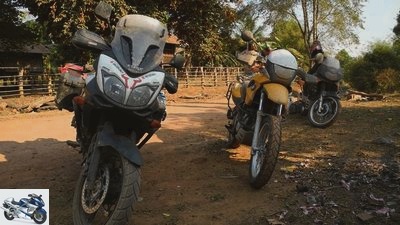
Hofmann
Like-minded people can also be found in Laos.
Sometimes children sprinted from over a hundred meters away, only to be able to wave to me beaming with joy and shout “Sabaidee” (Hello). I was also a welcome change for the village elders. They often asked me in Lao where I was going. Not surprisingly to Attapeu – the path led exclusively to this city; There were simply no crossings or forks. After this information, the men usually met briefly and then proudly showed me the way (exactly further in the direction of travel). This farce cost me valuable time every time, but I could understand the villagers only too well. And so I smiled patiently, shouted “Khob Jai Lei Lei” (Thank you very much) to them and bowed slightly before continuing my journey.
After about a third of the way, an almost insurmountable obstacle awaited me. At the end of the typical steep slope to the river bed, eight children were already waiting on the bank, which can only mean one thing: A very deep river through which you have to carry your motorcycle. During a first fleeting inspection of the river, I was sobered to find that the water reached almost up to my waist and that the current was quite strong at the deepest point of all places. I waded purposefully through the river towards the children and asked about their asking prices. Almost amused, I watched them paint one zero after the other in the sand – 200,000 kip (20 euros).
Ridiculously expensive! I offered them one euro with the ulterior motive not to pay more than five euros. To my amazement, they turned down every offer I made and still asked for a utopian ten euros. I played all the negotiating tricks I had learned in Bangkok: leaving, laughing, waving money, driving away, walking down the river several times … Nothing helped. A little annoyed, I began to take off all my luggage, took off my jacket and offered the children five euros for the last time. When they refused this offer too, I walked the ideal trail through the river again and marked all the larger rocks with bamboo tubes. I put first gear and started pushing my beloved Suzuki through the river at consistently high revs. The children watched me spellbound from the bank and I was unable to hide my tension and uncertainty adequately either. If I have to destroy my Suzuki, please do so in a real James Bond moment at 120 km / h, lots of fire and a loud bang. But not in a river in the middle of the Laotian jungle in front of the gleeful eyes of some thugs.
At the lowest point I have to put all my body weight against the current and luckily I made it to the long-awaited bank with full throttle and careful clutch play. With my chest swelling with pride, I marched through the river with a 50,000 kip note in my hand, put it in my wallet in front of the puzzled looking children and with the last of my strength I put my luggage back on the motorcycle. It should be the last exhilaration for a long time.
Close to absolute exhaustion, I had to rest in the shade for 20 minutes several times to get my Suzuki up again on a river slope with new strength. The water was running out; my legs increasingly developed a life of their own. I was desperate. In the last six hours I covered just 40 kilometers, it was already 3:30 p.m. and about 45 kilometers separated me from the next paved road. How am I supposed to do this? Where will I sleep? What will I eat / drink?
These unhelpful thoughts were suddenly interrupted by exuberant children’s laughter. I immediately jumped back on my bike, drove in the direction of the children, and only two minutes later I was in a promising village. It was more than twice the size of all the villages before, had electricity, reasonably developed dirt roads and even a small restaurant. When I had just finished the first bottle of water, a German suddenly drove up from the opposite direction on a Honda Transalp – I couldn’t believe it.
“Where are you from?” I asked Jens. “From Attapeu.”
“How far is it to there?” – “40 kilometers approx.”
“How is the street? How long did it take you for the route? “-” Super dirt road, you’ll be there in about an hour. “
Thank you thank you thank you! I’ve never been so happy to meet a German on vacation. Maybe I’ve never been so excited to meet anyone anywhere. I was saved! My horror stories convinced Jens and his girlfriend Sylwia to turn back and tackle the route the next day. So the three of us drove the 40 kilometers and only an hour later we stood in the hotel entrance with a large Beerlao (the Lao beer par excellence). cheers!
February 18, 2013
<!– ESI FOR ads.BannerGallery / irelements / esielement / eyJwYWdlIjoiL3N0YXJ0c2VpdGUvIiwibGF5b3V0IjoiYXJ0aWNsZSIsImVsZW1lbnQiOiJhZHMuQmFubmVyR2FsbGVyeSIsImlyQ29uZmlnIjoiMTQ3Mzc4ODEiLCJwYXJhbXMiOnt9LCJpc01vYmlsZSI6ZmFsc2V9 –> <!– CACHEABLE –>&# 34;,&# 34; rectangle&# 34 ;: “<!–# include virtual = \&# 34 / irelements / esielement / eyJwYWdlIjoiL3N0YXJ0c2VpdGUvIiwibGF5b3V0IjoiYXJ0aWNsZSIsImVsZW1lbnQiOiJhZHMuUmVjdGFuZ2xlR2FsbGVyeSIsImlyQ29uZmlnIjoiMTQ3Mzc4ODEiLCJwYXJhbXMiOnt9LCJpc01vYmlsZSI6ZmFsc2V9 \&# 34; –> <!– ESI FOR ads.RectangleGallery / irelements / esielement / eyJwYWdlIjoiL3N0YXJ0c2VpdGUvIiwibGF5b3V0IjoiYXJ0aWNsZSIsImVsZW1lbnQiOiJhZHMuUmVjdGFuZ2xlR2FsbGVyeSIsImlyQ29uZmlnIjoiMTQ3Mzc4ODEiLCJwYXJhbXMiOnt9LCJpc01vYmlsZSI6ZmFsc2V9 –> <!– CACHEABLE –>&# 34;,&# 34; sky&# 34 ;: “<!–# include virtual = \&# 34 / irelements / esielement / eyJwYWdlIjoiL3N0YXJ0c2VpdGUvIiwibGF5b3V0IjoiYXJ0aWNsZSIsImVsZW1lbnQiOiJhZHMuU2t5R2FsbGVyeSIsImlyQ29uZmlnIjoiMTQ3Mzc4ODEiLCJwYXJhbXMiOnt9LCJpc01vYmlsZSI6ZmFsc2V9 \&# 34; –> <!– ESI FOR ads.SkyGallery / irelements / esielement / eyJwYWdlIjoiL3N0YXJ0c2VpdGUvIiwibGF5b3V0IjoiYXJ0aWNsZSIsImVsZW1lbnQiOiJhZHMuU2t5R2FsbGVyeSIsImlyQ29uZmlnIjoiMTQ3Mzc4ODEiLCJwYXJhbXMiOnt9LCJpc01vYmlsZSI6ZmFsc2V9 –> <!– CACHEABLE –>&# 34;}}” ga-track-vis =”article.gallery.inline.vis” class =”v-A_-article__inline-container”>
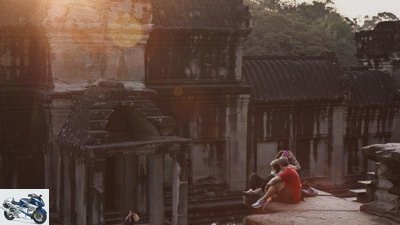
Hofmann




17th pictures
Pictures: Journey: From Malaysia to Germany
go to Article
To home page
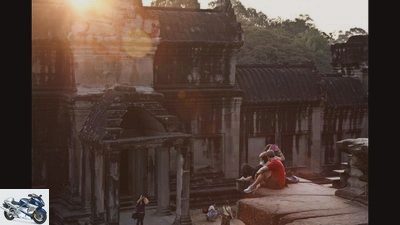
Hofmann
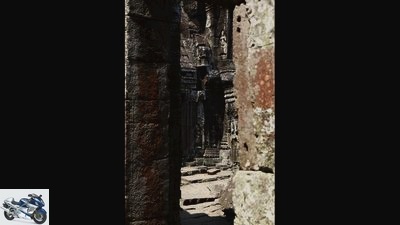
Hofmann
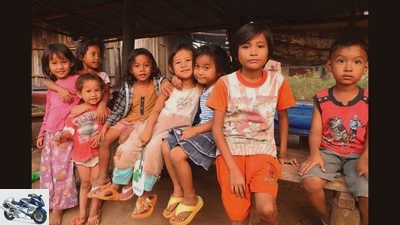
Hofmann
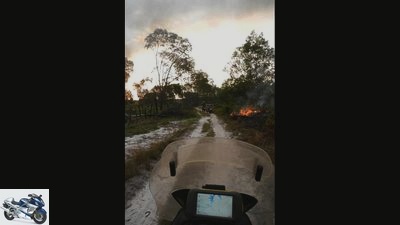
Hofmann

Hofmann

Hofmann
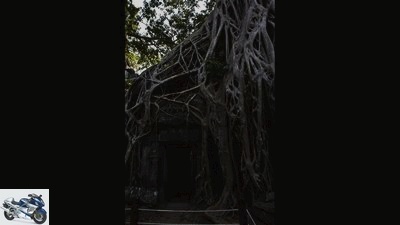
Hofmann
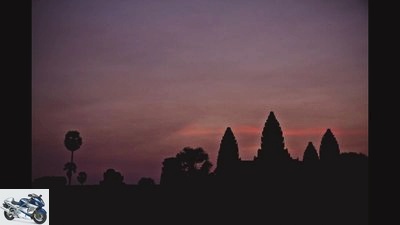
Hofmann
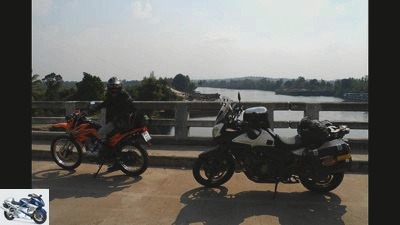
Hofmann
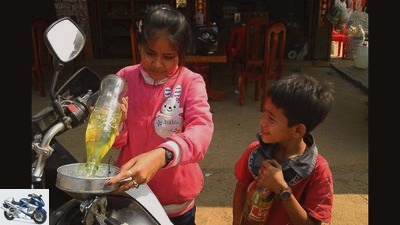
Hofmann
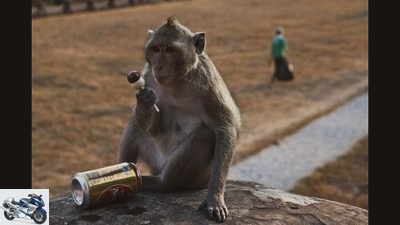
Hofmann
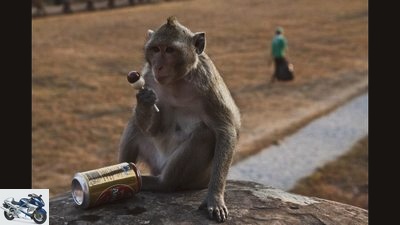
Hofmann
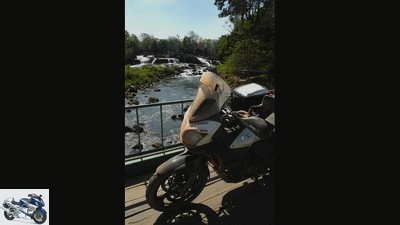
Hofmann
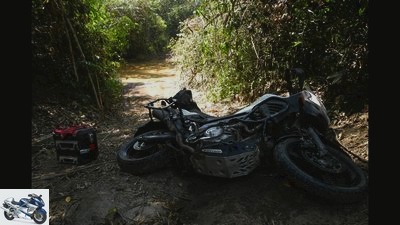
Hofmann
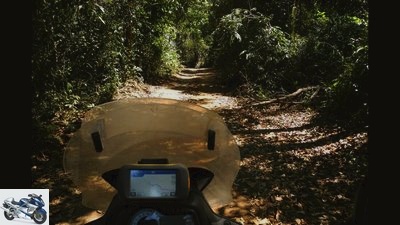
Hofmann
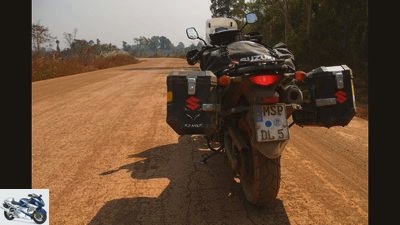
Hofmann
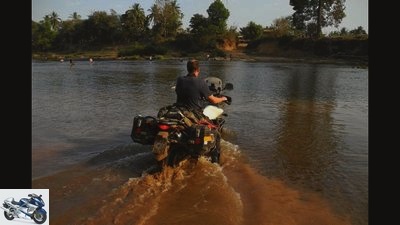
Hofmann
1/17
“Why are you doing this alone? Can’t you find another madman Aren’t you lonely then? “
Something similar was probably the most frequently asked question to me in the run-up to my trip. For people who have never traveled through Asia, it is difficult to imagine that loneliness is an impossibility there. You just meet locals, other travelers or emigrants with whom you spend time together everywhere. As a single traveler in particular, you are often approached and ironically, you have more social contacts than group travelers. This phenomenon was consistently evident in Cambodia:
After four great days in Bangkok I left Sivalai Place with old friends and headed for Cambodia. I made my last stop in Thailand near Klaeng (Rayong), where the parents of a good friend invited me to their home. They picked me up in Klaeng, showed me the food market and bought some local specialties that we would enjoy with the whole family in the evening: chicken, rays, shrimps, mango with sticky rice, desserts … The dinner together was surprisingly fun . Some family members could speak a little English and together with my knowledge of Thai, hands, feet and plenty of wine, we got along very well. The next morning I said goodbye to the family and continued on my way to Cambodia.
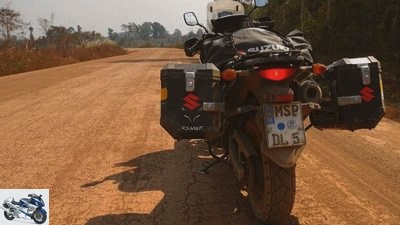
Hofmann
Dusty slopes as far as the eye can see.
When I arrived at the border, I noticed a 200cc Lifan and only a few meters away I met Heinz, the German owner of the machine, at the customs house. He is around his mid-50s has lived almost everywhere in the world and currently lives in Chiang Mai (Thailand). We get along straight away and decide to tackle the journey to Sihanoukville together. Since neither of us really informed each other about the city, we land at the completely deserted end of Sihanoukville and check into the extremely tempting-sounding Snake Guesthouse. After a shower we stand downstairs in the courtyard by the machines and are a little at a loss as to how to spend the evening in this ghost town. At that moment, Roman, Jana and Daniel, a Russian family, approach us and Roman says beaming with joy: “If you need help with anything, let me know! I am very happy to help you! “
Fantastic! Heinz is looking for a gas station, I am looking for an ATM and we are both looking for a good restaurant. As soon as our wish has been expressed, Roman gets on his scooter and leads us about five kilometers into the city center. A little later, with a full tank of fuel and fresh money, Heinz and I sit overjoyed in front of a huge grill plate in a beach bar and make plans for the next day. When we wanted to start our way back around 10:00 p.m., I found a note on my GPS mount. My first thought was “crap, parking ticket”, but luckily there is no such thing in Cambodia. Jana and Harold, two Germans who drove exactly my route in the opposite direction, drew me a small map of their guesthouse and invited me for a beer. Immediately I throw all plans for the next day overboard and drive with Heinz to the Panda Guesthouse, where Jana and Harold welcome us warmly.
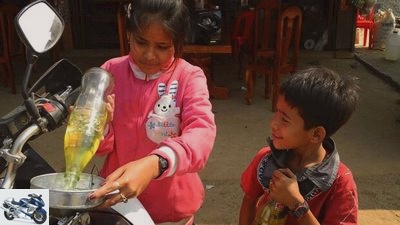
Hofmann
It doesn’t help. Actually, I wanted the V-Strom to save the life of a bottle child.
For the next two hours we exchange hair-raising anecdotes that only motorcycle travelers can experience, talk shop about our machines and coordinate our further routes. The two of them are very nice and funny and can also give me valuable tips for my future trip. So I decide to stay in Sihanoukville for another day while Heinz is already driving towards Phnom Penh – a very good decision, as it turned out. Practically the whole day I ask Jana and Harold Holes about their experiences in the stomach; especially about the piece in Pakistan. Both confirm my assessment that it is harmless, but still give me some contacts who are very knowledgeable and can evaluate the current security situation well. Funnily enough, Jana and Harold are also on the road in Suzuki V-Stroms and have not had a single breakdown (!) On their 25,000 km – not even a flat tire. Let’s hope I’m that lucky too.
The next morning I get back on my DL650 to head for the capital Phnom Penh, a good 300 kilometers away. The traffic there is insane, to put it mildly. In a flash of absolute anarchy, cars, buses, trucks and an endless number of mopeds criss-cross red lights, footpaths, etc. Absolutely crazy! In contrast, Bangkok is a model of orderliness. After about an hour in dense city traffic, I reached the hotel and bar street directly on the Mekong and could hardly believe my eyes: an orange 200cc Lifan stood in front of a small hotel – I found Heinz again in the two million metropolis.
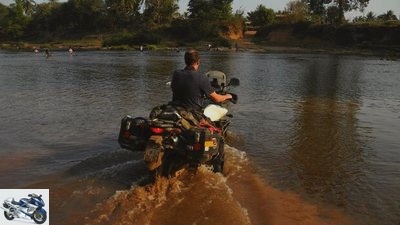
Hofmann
After countless river crossings, gladly accept the offer and let go through the river.
Since I usually go to bed much earlier than Heinz, I said goodbye shortly after our dinner together and started looking for a typical Cambodian breakfast early the next morning. Only a few streets away I came across the three infallible signs of a good restaurant: It was dirty, noisy and you sat on plastic chairs. As in almost all of Southeast Asia, a wonderfully fragrant noodle soup with meat and all kinds of seasoning options was served at this stand. These are actually the most important things; There is strong and weak fish sauce, dried chillies, chilli paste, salt, pepper, sugar, lime, soy sauce … Only a few minutes later, immersed in this soup alchemy, I noticed that the person sitting next to me was watching me with interest. A short time later he introduced himself to me as Boun Houen and we then talked for about 1.5 hours about the differences between Cambodia and Germany, my trip and of course soup;)
The next day I wanted to have the first service in Phnom Penh. Thanks to my extraordinary ability to get lost despite GPS and a map, I missed the large Suzuki Service Center and ended up in a tiny workshop. There, Dalin, a young English teacher, offered me help, took me to the Suzuki headquarters and even translated for me there. About 45 minutes later my DL650 had passed all tests with flying colors and I went to lunch with Dalin. His story is really impressive. He was born as one of five children into a very poor family in rural Cambodia. Since the public schools offered inadequate educational opportunities, he worked as a child in order to be able to afford a few afternoons at a private school.
With this knowledge, he found work as a waiter in Phnom Penh and moved into a shared apartment with Westerners to further improve his English skills. Today he is an English teacher at a private school and will teach at the national university for the next few years.
How lucky I was to have been born in Germany. Without anything in return, I acquired the right to a good education when I was born and perhaps that is precisely why I am rarely aware of my extraordinary situation. Dalin is also 23 years old and very similar to me in his way. So it was easy for me to put myself in his shoes and unfortunately I have to admit that I probably wouldn’t have shown his fighting spirit. If I had been born in Cambodia – otherwise exactly the same person – I would be a poor farmer today; I only travel the world through a different place of birth with a good school and university degree. A sobering thought that I hope will always keep me on the ground.
After a rather uneventful drive to Siem Reap, the city immediately bordering Angkor Wat, I was enjoying my Indian dinner when I noticed a young blonde woman. She kept smiling and was very polite and respectful to the waitress. On the spur of the moment, I asked her whether we would like to share a tuk-tuk to the temple complex. To my surprise it turned out that Johanna comes from Swabia and studied photography in Wurzburg (my hometown) – what a coincidence! We talk about photography and our travel plans for a while before we decide to just relax the next day and explore Angkor Wat the next day. Johanna is very nice, intelligent, uncomplicated and funny; in short: the perfect travel companion. We jokingly made plans how we could weld a sidecar to my motorcycle or attach a tuk-tuk trailer hitch (all-clear to Suzuki: I have rejected both ideas;)).
Angkor Wat itself was very beautiful and impressive, but couldn’t quite keep up with the sparkling hymns of praise (keyword: eighth wonder of the world). Nevertheless, it was a very nice day, which we befittingly in the infamous bar Angkor What? let it fade away. Of course only with a maximum of two beers, as I would be going to Laos the next day … Laos, my secret love, since I drove a motorcycle all over the mountainous country for two months last year. There I learned as much as perhaps nowhere else in such a short period of time and I go through many encounters in thoughts or dreams over and over again. I’m curious how it will feel when this dream world becomes a reality again. Off to Laos!
5th February 2013
<!– ESI FOR ads.BannerGallery / irelements / esielement / eyJwYWdlIjoiL3N0YXJ0c2VpdGUvIiwibGF5b3V0IjoiYXJ0aWNsZSIsImVsZW1lbnQiOiJhZHMuQmFubmVyR2FsbGVyeSIsImlyQ29uZmlnIjoiMTQ3Mzc4ODEiLCJwYXJhbXMiOnt9LCJpc01vYmlsZSI6ZmFsc2V9 –> <!– CACHEABLE –>&# 34;,&# 34; rectangle&# 34 ;: “<!–# include virtual = \&# 34 / irelements / esielement / eyJwYWdlIjoiL3N0YXJ0c2VpdGUvIiwibGF5b3V0IjoiYXJ0aWNsZSIsImVsZW1lbnQiOiJhZHMuUmVjdGFuZ2xlR2FsbGVyeSIsImlyQ29uZmlnIjoiMTQ3Mzc4ODEiLCJwYXJhbXMiOnt9LCJpc01vYmlsZSI6ZmFsc2V9 \&# 34; –> <!– ESI FOR ads.RectangleGallery / irelements / esielement / eyJwYWdlIjoiL3N0YXJ0c2VpdGUvIiwibGF5b3V0IjoiYXJ0aWNsZSIsImVsZW1lbnQiOiJhZHMuUmVjdGFuZ2xlR2FsbGVyeSIsImlyQ29uZmlnIjoiMTQ3Mzc4ODEiLCJwYXJhbXMiOnt9LCJpc01vYmlsZSI6ZmFsc2V9 –> <!– CACHEABLE –>&# 34;,&# 34; sky&# 34 ;: “<!–# include virtual = \&# 34 / irelements / esielement / eyJwYWdlIjoiL3N0YXJ0c2VpdGUvIiwibGF5b3V0IjoiYXJ0aWNsZSIsImVsZW1lbnQiOiJhZHMuU2t5R2FsbGVyeSIsImlyQ29uZmlnIjoiMTQ3Mzc4ODEiLCJwYXJhbXMiOnt9LCJpc01vYmlsZSI6ZmFsc2V9 \&# 34; –> <!– ESI FOR ads.SkyGallery / irelements / esielement / eyJwYWdlIjoiL3N0YXJ0c2VpdGUvIiwibGF5b3V0IjoiYXJ0aWNsZSIsImVsZW1lbnQiOiJhZHMuU2t5R2FsbGVyeSIsImlyQ29uZmlnIjoiMTQ3Mzc4ODEiLCJwYXJhbXMiOnt9LCJpc01vYmlsZSI6ZmFsc2V9 –> <!– CACHEABLE –>&# 34;}}” ga-track-vis =”article.gallery.inline.vis” class =”v-A_-article__inline-container”>
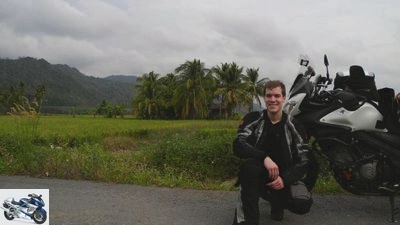
Hofmann




8th pictures
Pictures: Journey: From Malaysia to Germany
go to Article
To home page

Hofmann
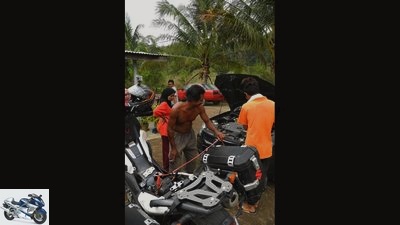
Hofmann
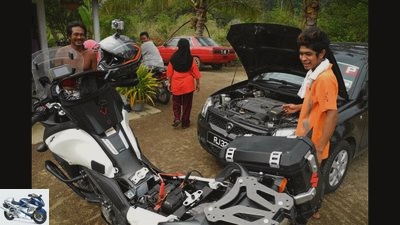
Hofmann
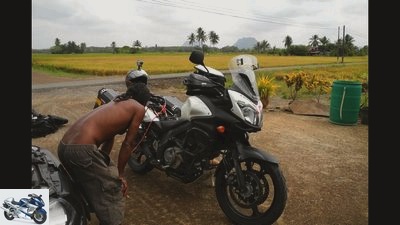
Hofmann
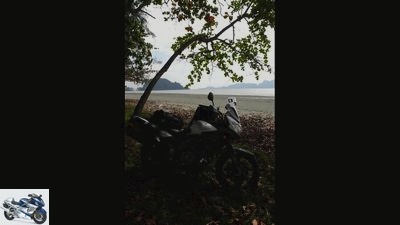
Hofmann
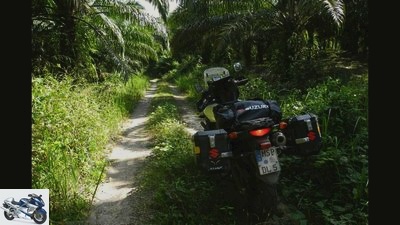
Hofmann
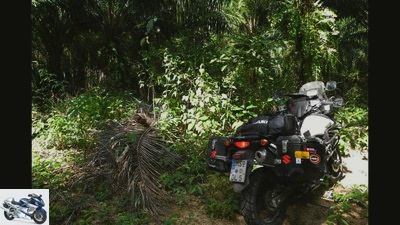
Hofmann
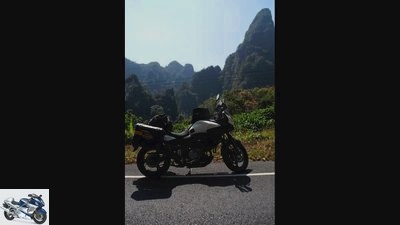
Hofmann
1/8
Some of you may be wondering how route planning works on an interactive road trip. Not at all in detail, of course, as any suggestion would shake my schedule. Therefore – as with all of my trips – I planned very minimalistically and often only specified an approximate length of stay and a rough direction of travel. This allows me to adapt my route to weather conditions, advice from the locals and, last but not least, your interactive tasks. Most of the time I decide in the evening how long I want to drive the next day and design a route with Garmin BaseCamp to match.
Since I was quite conservative in Malaysia with an average of only 200-300 km, I wanted to train in Thailand for the long, hard stages that would await me in Laos. So I decided to drive the 500 km from Penang (Malaysia) to Krabi (Thailand) in one go. A first surprise awaited me before I even sat on my Suzuki: It was dark. So far I’ve always allowed myself the luxury of sleeping in and then setting off after a hearty breakfast. So I didn’t know when the sun would come up and at 7:00 am, I was a bit disillusioned, fully dressed and packed in the nightly calm of Georgetown.
With the first rays of sunshine around 7:30 am I was finally able to start my motorcycle and made good progress on the very well-developed roads of Malaysia. After only two hours I was already about 20 km from the Thai border when I had the glorious idea to take some pictures and videos on a small dirt road away from the road. In my enthusiasm for the great landscape, I forgot the GPS on the motorcycle and accidentally switched on the parking light. The result can be summed up in two words: Battery empty.
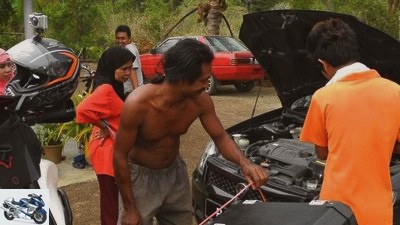
Hofmann
After extensive photography, the battery ran out for the first time.
I had no choice but to push the almost 300 km heavy machine to the next house and trust the helpfulness of the locals. As always, this trust was more than rewarded. The nice family not only bridged my battery, but also offered me water and were very interested in my motorcycle and my trip. After about 45 minutes I was ready to go and said goodbye to all family members before I continued my journey.
This encounter may seem small, but it still illustrates why I admire Southeast Asian culture so much. It is very easy to come into contact with people and to get to know them in a very pleasant way. A smile was enough for the family to offer me their help and after a few small gestures of respect (e.g. asking for the name, bowing slightly …) I was asked into the house and was given water. Ultimately, the family enjoyed the opportunity to help me and hang out with me. I first experienced this understanding of willingness to help – help as an opportunity and not as a chore – in Indonesia and have been trying to implement it in everyday life ever since. Unfortunately, I still rarely succeed.

Hofmann
The Suzuki has the perfect bikini figure.
The rest of the journey went without any problems and in the late afternoon I reached Krabi, the popular tourist transshipment point in southern Thailand. Krabi’s very convenient location between Phuket, Ao Nang, Koh Phi Phi, Railey Beach and Koh Samui is both a blessing and a curse. Curse, because countless travelers inevitably destroy the price structure; in particular the restaurants in Krabi were disproportionately expensive with only average quality. At the same time, however, Krabi’s location is a blessing, as the host of constantly pilgrim tourists creates a counter-movement that wants to escape the hustle and bustle and relax for a few days without time pressure. This type of traveler is exactly to my taste, which is probably why I spent three full days in Krabi.
The morning after I arrived, I met Rick, one of those travelers. He is a German IT expert who spends most of the year in Melaka (Malaysia) and has traveled around the world for many years on his self-made motorcycle. Since we first met, I have been asking Rick holes in the stomach, trying to learn as much as I can from him. How do I cut videos to save time? Which driving position is energy-saving off-road? How do I react to suddenly appearing mud / sand? On my long journey, his experiences will certainly be of great value to me. When saying goodbye, he offers me his help with PC questions, invites me to his house in Melaka and says a sentence that now makes me smile: “If you were the typical professional adventurer, I would have said goodbye quickly. Only things that go wrong make your project interesting. “

Hofmann
To spice up the rather boring route around Bangkok, I have made up some routes through the jungle.
But I almost passed that smile on the same day. My next stage was to take me on monotonous highways the 550 km from Krabi to Chumphon. Motorway and adventure are only compatible to a limited extent, which is why I diverted the first part of the route to small roads, dirt roads and jungle tracks. My daring paid off on the first 50-60 km: I drove on tiny asphalt and dirt roads parallel to the Andaman coast, crossing remote villages and jungle passages. But then my luck left me in the lurch. A small trail led me deeper and deeper into the jungle through increasingly dense vegetation. After about four kilometers a labyrinth of tiny paths began, of which my GPS only knew one. When it ended in nowhere a few hundred meters later, I was faced with an actually easy decision:
1) Turn around, drive back the way available in the GPS and lose approx. 15 minutes.
2) Drive through the labyrinth on your own without GPS data and hope that the sandy paths will lead me back to the road at some point.
You can probably guess what I decided to do…
After just a few minutes, I was hopelessly lost in the jungle and drove randomly into every little trail I passed. During turning maneuvers on sandy ground, my DL650 tipped over several times, so that I had to straighten my companion, which weighed around 270 kilos, at what felt like 50 ° C. I think there is no need to emphasize that I was at the end of my strength and increasingly also my nerves. At some point I switched to the Hansel-und-Gretel tactic and set a waypoint in my GPS at every tiny intersection. So at least I knew which paths I had already taken and was able to improve my chances of success according to the principle of exclusion. And in fact, with this strategy I found my way back to the main path after a good hour and was completely exhausted and was able to save myself on the paved road.
Maybe it was a good thing that my recklessness almost broke my neck so early. I travel alone and have to solve every problem I maneuver myself into. In the future I will only drive on jungle paths that are known to the GPS or that lead straight ahead without branches. As soon as I run the risk of getting lost, I’ll turn around. Even if I lose an entire day as a result. With a view to Cambodia and Laos in particular, this experience may save me from worse.
The rest of the way to Bangkok was then very unspectacular. I stopped in Chumphon, Hua Hin (great seafood!) And Ratchaburi before arriving at Sivalai Place in Bangkok. I lived there during my exchange semester, I still know many of the employees personally and really feel at home. About three kilometers before my arrival I recognized the first restaurants, shops, etc. until suddenly I was able to orient myself and steer my Suzuki through the tiny alleys of my second home full of anticipation. As soon as I arrived at Sivalai Place, Oillie, the manager, greeted me with a huge hug, padthai (fried noodles) and a fruit basket – welcome home 🙂
January 30, 2013
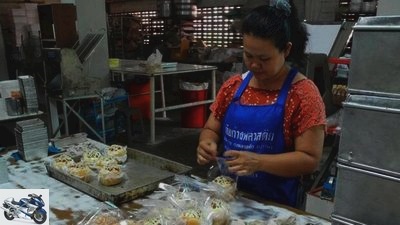
Hofmann
The Eat Bakery is currently a completely normal bakery.
The really special thing about my project is the interactive component. This way you can actively shape my journey and become part of my adventure. Via my (www.facebook.com/stevensway.oflife) or the Suzuki Facebook page (www.facebook.com/suzukimotorraddeutschland) you can give me tasks that I will tackle and then publish pictures / videos of them here.
Viola was the first to take this opportunity and asked me to go to the “Eat Bakery”. In this bakery, Kittiwat Unarrom produces breads that look confusingly similar to human corpse parts. Right from the start I found the task interesting, but already suspected that the search would not be easy.
Even after intensive Google research, I couldn’t find a better location than the very vague “in the province of Ratchaburi”. No one in Krabi, Chumphon or Hua Hin had heard of this bakery; So I had no choice but to drive to the city of Ratchaburi unprepared. As soon as I arrive, I start to suspect that I might be the only tourist in this sleepy town. There are practically no English signs and even after 30 minutes’ odyssey through the city I still couldn’t find a hotel or guesthouse. The directions given by the locals either turn out to be wrong or are so detailed that I can only remember them two crossroads. A little disillusioned, I turn the next corner and out of the corner of my eye I see a coat of arms with the words “Education Comission”: An educational institution! They just have to speak English there.
So I turn into the school yard and – amazed by around 50 students – I am greeted by the director and three teachers. Unfortunately, they too had a poorer command of English and spent the next ten minutes lively discussing things, drawing a map by hand and gesturing wildly in all directions. By then I had already buried my hopes and watched the spectacle with an astonished smile when a teacher gently pulled me by the arm next to him on a bench. After the typical introductory phrases, he wants to know whether I’ve already had lunch. In Thailand this question means a lot more than the content suggests. It serves less to obtain information than to carefully feel whether I would like to talk to him. So I assured him that I hadn’t eaten anything and that I was very hungry, whereupon he invited me to a neighboring restaurant. There I tell him about my trip and he gives me interesting insights into the political system in Thailand. Then he accompanies me to a hotel on his moped and invites me to dinner with his family. I accept this invitation beaming with joy and bow in goodbye.
He later explained his hospitality to me as follows: “If you smile, I will help you. And if you show interest in me, I’ll spend time with you. ”This statement reminded me once again that hospitality is not a one-way street, but always has to be earned through respectful behavior. Thanks for this lesson.
Before dinner, I stop by the laundry to drop off a couple of T-shirts and ask about the bakery there too. To my astonishment, they know the “Eat Bakery” and can even hand me a hand-drawn card after a few phone calls.
So after an outstanding dinner, I set off the next day armed with a hand drawing, a telephone number and an extra dose of optimism. I find Photharam, the village where the bakery is supposed to be, straight away and I think I have made out the destination street after another ten minutes. Only the bakery is still a long way off. So I stop at a small street restaurant and try to pronounce “Eat Bakery” in the best Thai-English understandably: “Eat Bakelyyyyyyy?” In fact, the woman understands me after the second attempt and asks her colleague to show me the way. This leads me past the abandoned sales building to the actual bakery in the backyard. A young man with a shy smile introduces himself to me as Kittiwat Unarrom – this is the place for me!
It turns out that Kittiwat no longer makes the ‘human’ bread, but is now experimenting on whole bread sculptures. As soon as he can bake these in high quality, he will also open the sales room again. Until then, Eat Bakery is almost a normal bakery – apart from the terrifyingly realistic ‘human’ loaves of bread that are still littered around the bakery. After a short exploration tour through his bakery, Kittiwat gives me a coconut bread and after a delicious lunch in the street restaurant I visited before, I set off for Bangkok.
My first task turned out to be much more difficult than originally assumed. So I’m all the happier that I was finally able to find the “Eat Bakery” and that I met a lot of extremely friendly people in my search. In particular, I would like to highlight the nice family from Ratchaburi, whom I might visit again on my second visit to Thailand in March.
Check out the HD video of my search and give me more tasks! Now I’ve really enjoyed the interactive concept and I’m really looking forward to your ideas.
\ n<div class = \&# 34; v-A_-custom-html v-A_-custom-html – video \ “>\ n<iframe width = \&# 34; 578 \&# 34; height = \&# 34; 325 \&# 34; src = \&# 34; https: //www.youtube.com/embed/FIQgZOPeANY \&# 34; frameborder = \&# 34; 0 \&# 34; allowfullscreen></ iframe>\ n</ div>\ n</ div>\ n&# 34;,&# 34; consentGroup&# 34;: null}”>
January 28, 2013
<!– ESI FOR ads.BannerGallery / irelements / esielement / eyJwYWdlIjoiL3N0YXJ0c2VpdGUvIiwibGF5b3V0IjoiYXJ0aWNsZSIsImVsZW1lbnQiOiJhZHMuQmFubmVyR2FsbGVyeSIsImlyQ29uZmlnIjoiMTQ3Mzc4ODEiLCJwYXJhbXMiOnt9LCJpc01vYmlsZSI6ZmFsc2V9 –> <!– CACHEABLE –>&# 34;,&# 34; rectangle&# 34 ;: “<!–# include virtual = \&# 34 / irelements / esielement / eyJwYWdlIjoiL3N0YXJ0c2VpdGUvIiwibGF5b3V0IjoiYXJ0aWNsZSIsImVsZW1lbnQiOiJhZHMuUmVjdGFuZ2xlR2FsbGVyeSIsImlyQ29uZmlnIjoiMTQ3Mzc4ODEiLCJwYXJhbXMiOnt9LCJpc01vYmlsZSI6ZmFsc2V9 \&# 34; –> <!– ESI FOR ads.RectangleGallery / irelements / esielement / eyJwYWdlIjoiL3N0YXJ0c2VpdGUvIiwibGF5b3V0IjoiYXJ0aWNsZSIsImVsZW1lbnQiOiJhZHMuUmVjdGFuZ2xlR2FsbGVyeSIsImlyQ29uZmlnIjoiMTQ3Mzc4ODEiLCJwYXJhbXMiOnt9LCJpc01vYmlsZSI6ZmFsc2V9 –> <!– CACHEABLE –>&# 34;,&# 34; sky&# 34 ;: “<!–# include virtual = \&# 34 / irelements / esielement / eyJwYWdlIjoiL3N0YXJ0c2VpdGUvIiwibGF5b3V0IjoiYXJ0aWNsZSIsImVsZW1lbnQiOiJhZHMuU2t5R2FsbGVyeSIsImlyQ29uZmlnIjoiMTQ3Mzc4ODEiLCJwYXJhbXMiOnt9LCJpc01vYmlsZSI6ZmFsc2V9 \&# 34; –> <!– ESI FOR ads.SkyGallery / irelements / esielement / eyJwYWdlIjoiL3N0YXJ0c2VpdGUvIiwibGF5b3V0IjoiYXJ0aWNsZSIsImVsZW1lbnQiOiJhZHMuU2t5R2FsbGVyeSIsImlyQ29uZmlnIjoiMTQ3Mzc4ODEiLCJwYXJhbXMiOnt9LCJpc01vYmlsZSI6ZmFsc2V9 –> <!– CACHEABLE –>&# 34;}}” ga-track-vis =”article.gallery.inline.vis” class =”v-A_-article__inline-container”>
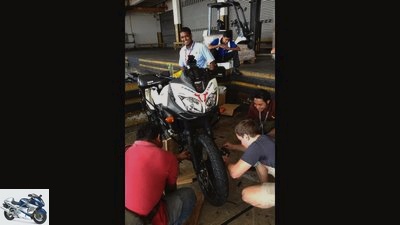
Hofmann




8th pictures
Pictures: Journey: From Malaysia to Germany
go to Article
To home page
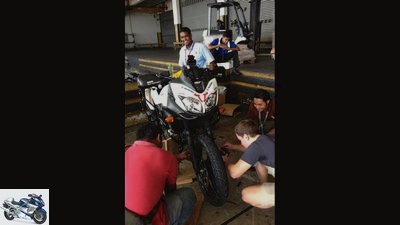
Hofmann

Hofmann
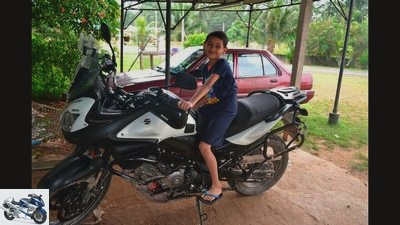
Hofmann
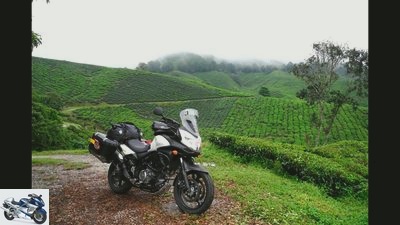
Hofmann
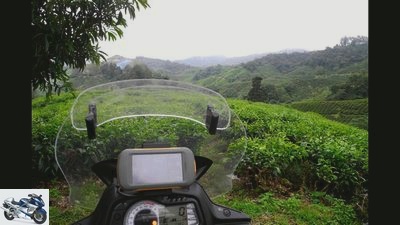
Hofmann

Hofmann
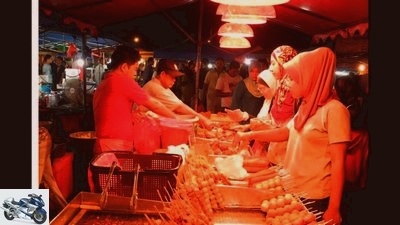
Hofmann

Hofmann
1/8
What a fantastic weekend! I don’t even know where to start with my story … Best in October 2011: At that time I was in Malaysia for the first time and hiked through the jungle of the Taman Negara without any planning. I left all my things in Jerantut, about 30km from the national park. When I reached the bus stop after several hours, muddy, wet and sweaty, I found that the last bus had already left over an hour ago. So I’m standing at the main street with no money, luggage or Plan B and am a little at a loss. At that moment, Aishah stops with her car next to me and offers to take me to Jerantut – free of charge. But not only that: Since she recognizes my enthusiasm for Malay cuisine, she even recommends a night market, which has the best food in town. I was incredibly grateful to her and stayed in touch with her on Facebook ever since. Now she and her family invited me to their home; an offer that I was only too happy to accept.
On Saturday evening, after a rather uneventful drive, I arrive in Jerantut and Aishah and her brother pick me up at my hotel. I follow her car with my V-Strom to safely park her with Aishah’s family. Your huge family (Aishah has eleven siblings) gives me a warm welcome, even if Aishah is the only one who speaks English. After tea and snacks, we drive with Aishah, her mother, two brothers, her sister-in-law, a niece and two nephews to the local market to buy various specialties. In case you haven’t heard it: I LOVE food and everything that has to do with it! Accordingly, I was fascinated by the sight of the 200 food stands, which Aishah probably did not hide, because she stopped at every second stand to tell me something about the delicacy sold there. Like a small child in a candy store, I follow Aishah with astonishment and listen to her statements, which were occasionally interrupted by a warm “Hello, Sir!” From the seller – I was the only Westerner on the market…
After a while we return to the car with six bags and drive towards the city park to have a picnic. Here, too, Aishah leads me past all faux pas, lovingly and purposefully, by handing me the right drink / food at the right time and showing me how to eat it. Although I can only talk to Aishah, I can tell from the gestures and looks of the rest of the family that I am welcome. Seldom had I spent such a beautiful evening and even now, while writing, I can’t help but smile with satisfaction.
The next morning, as always, I ask the locals what their favorite breakfast is. In Jerantut there was an unfamiliar consensus on this question: Sayid’s Roti Canai shop! Roti Canai is a very thin dough that is coated with fat, baked and then served with curry dips. I’m not even three steps in the shop when the strange certainty creeps up on me that I’m going to have an extraordinary breakfast: The shop is hopelessly overcrowded, you hardly understand your own word and you sit on small, dirty plastic chairs. Three sure signs of a good restaurant. I sit down with a local at a table of eight, which quickly fills up with another five people. As the only Westerner, I am once again the absolute attraction and each of my orders is loudly called to the counter by the people sitting next to me to make sure that I always have a roti and tea in front of me. Two of the locals speak a little English and are absolutely thrilled with my trip. They translate my every word, which is greeted with excited hum and shaking of the head in disbelief. As a result, I’m the number one topic of conversation and order another roti with tea. I eat, talk, joke and laugh with my new friends for about an hour before I slowly have to leave. To my great surprise, the oldest man at the table has already paid my bill and invited me to breakfast. When leaving, each of the six men pats me on the shoulder and nods in appreciation – what a great experience! I think that was the best breakfast of my life.
I leave Sayid’s Roti store and already see Aishah’s car parked in front of my hotel. She and her brother drive me to their house, where an unforgettable day awaits me. With Aishah’s niece and nephew we visit nearby caves and spend the afternoon with typical Malay board games and marbles. In between, I enjoy a self-cooked feast with ten other family members: fish, chicken, beef, vegetables, fried rice, fruit, dessert and tea. Wonderful!
Aishah’s oldest brother then shows me how to open a coconut and as a small thank you I teach him how to ride a gearshift motorcycle. So far he has only driven small scooters and has been marveling at the Suzuki with big eyes all day. After two attempts he quickly got the hang of it and comes back proud like Oskar from his little jaunt.
The next morning I invite the family to breakfast (EUR 3.25 for five people) and take a few farewell photos with them. Aishah’s mother has taken me to her heart by now at the latest. On the entire way back she chatted nonstop in Malay, and I kept understanding the words “moto”, “Suzuki” and “Europe”. When I arrive at their house, I am given a long goodbye and set off for Jeli and Penang.
I don’t know how I can ever thank Aishah for this. That was one of the nicest experiences of my life. She is very religious but open-minded; very traditional and curious; a conscientious family man and humorous. A mixture that I thought was impossible. I started my journey to learn more about life and to come back a little more experienced. Now I have learned my first important lesson: Before I can learn anything new, I have to dispel all errors and hasty conclusions. Only then can I approach people with confidence and really learn from them. Thank you Aishah for this wonderful weekend, for your hospitality and for this valuable lesson!
Adventurous greetings from Penang (Malaysia),
Steven
January 25, 2013

Hofmann
First of all, the DL 650 wants to be freed.
After more than 16 hours on the plane and a stopover in Muscat (Oman), I finally landed in Kuala Lumpur (Malaysia) on Tuesday evening. Now I just have to shake off the jetlag as quickly as possible and get my motorcycle through customs before I can start.
When it comes to customs issues in Asian countries, one actually expects a story of blood, sweat and tears. The reason my story is far less adventurous is called Kevin. In order to get to the cargo terminal as quickly as possible, I made a reservation in KL at the YouniQ Hotel at the airport and helped organize the transfer. So I arrive, am immediately greeted by Kevin, the hotel manager, at the airport and we start talking. He is so enthusiastic about my plan that he lets me stay two nights for free and takes the entire next day off to smuggle the Suzuki through customs with me.
Indeed, the next morning he is ready punctually with his car and a bottle of water to plunge into the depths of Malay bureaucracy with me. I soon realized how lucky I was to have Kevin by my side. In the next five hours or so we rushed through about 15 offices that were randomly distributed across the huge customs area. This is actually not possible without your own car. In part, the procedure already had humorous traits: You get a document in building A, which you have to have stamped in building B at the other end of the customs area, only to be presented for signature in building A afterwards. With the form now signed one was allowed to go back to building B to receive the next document. The whole thing reminded me a bit of the “crazy house” from Asterix & Obelix.

Hofmann
There are 8 km ahead of me “one way street”.
For reasons of space we had to dismantle the front wheel and some other small parts in Germany. So we needed help to slide the Suzuki out of the frame and mount the bike. This “problem” was then the urgently needed wake-up call: “Steven, you are in Asia !!”. When the locals only saw the Suzuki box, a group of seven immediately gathered, with almost childlike joy, who threw themselves on the motorcycle and practically assembled it on their own. I slipped – again – into the role of a spectator, only nodded off the boys’ cautious inquiries and handed out tools – “This screw here, boss?”, “You have tool, boss?”, “Nice bike, boss!”. The scene had something like school friends putting together their new Lego set together. After less than 30 minutes we were done, I thanked all the helpers personally and gave them the frame for resale.
The crowning glory of the day was the first starting of the DL650 on Asian soil. I was dirty, sweaty, and drained from jet lag, but I’ve probably never had such a big grin of relief on my face. I will spend the next seven months on this motorcycle. It will be my loyal companion and hopefully my guarantee for many unforgettable experiences. Here we go!
<!– ESI FOR ads.BannerGallery / irelements / esielement / eyJwYWdlIjoiL3N0YXJ0c2VpdGUvIiwibGF5b3V0IjoiYXJ0aWNsZSIsImVsZW1lbnQiOiJhZHMuQmFubmVyR2FsbGVyeSIsImlyQ29uZmlnIjoiMTQ3Mzc4ODEiLCJwYXJhbXMiOnt9LCJpc01vYmlsZSI6ZmFsc2V9 –> <!– CACHEABLE –>&# 34;,&# 34; rectangle&# 34 ;: “<!–# include virtual = \&# 34 / irelements / esielement / eyJwYWdlIjoiL3N0YXJ0c2VpdGUvIiwibGF5b3V0IjoiYXJ0aWNsZSIsImVsZW1lbnQiOiJhZHMuUmVjdGFuZ2xlR2FsbGVyeSIsImlyQ29uZmlnIjoiMTQ3Mzc4ODEiLCJwYXJhbXMiOnt9LCJpc01vYmlsZSI6ZmFsc2V9 \&# 34; –> <!– ESI FOR ads.RectangleGallery / irelements / esielement / eyJwYWdlIjoiL3N0YXJ0c2VpdGUvIiwibGF5b3V0IjoiYXJ0aWNsZSIsImVsZW1lbnQiOiJhZHMuUmVjdGFuZ2xlR2FsbGVyeSIsImlyQ29uZmlnIjoiMTQ3Mzc4ODEiLCJwYXJhbXMiOnt9LCJpc01vYmlsZSI6ZmFsc2V9 –> <!– CACHEABLE –>&# 34;,&# 34; sky&# 34 ;: “<!–# include virtual = \&# 34 / irelements / esielement / eyJwYWdlIjoiL3N0YXJ0c2VpdGUvIiwibGF5b3V0IjoiYXJ0aWNsZSIsImVsZW1lbnQiOiJhZHMuU2t5R2FsbGVyeSIsImlyQ29uZmlnIjoiMTQ3Mzc4ODEiLCJwYXJhbXMiOnt9LCJpc01vYmlsZSI6ZmFsc2V9 \&# 34; –> <!– ESI FOR ads.SkyGallery / irelements / esielement / eyJwYWdlIjoiL3N0YXJ0c2VpdGUvIiwibGF5b3V0IjoiYXJ0aWNsZSIsImVsZW1lbnQiOiJhZHMuU2t5R2FsbGVyeSIsImlyQ29uZmlnIjoiMTQ3Mzc4ODEiLCJwYXJhbXMiOnt9LCJpc01vYmlsZSI6ZmFsc2V9 –> <!– CACHEABLE –>&# 34;}}” ga-track-vis =”article.gallery.inline.vis” class =”v-A_-article__inline-container”>
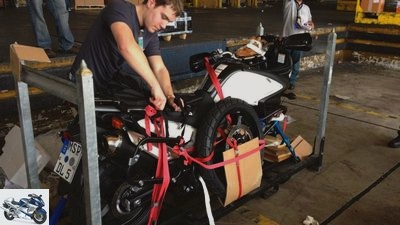
Hofmann




8th pictures
Pictures: Journey: From Malaysia to Germany
go to Article
To home page
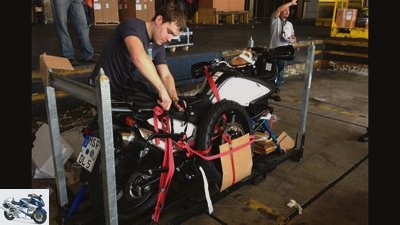
Hofmann
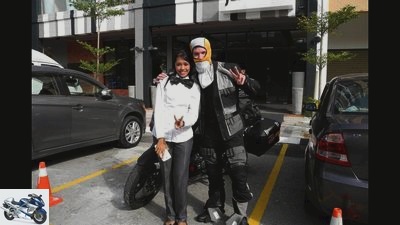
Hofmann

Hofmann
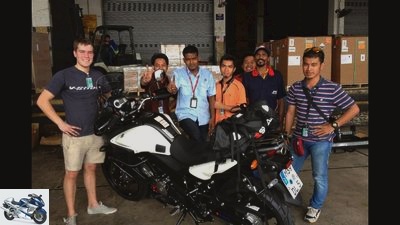
Hofmann
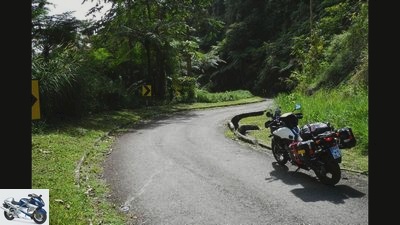
Hofmann
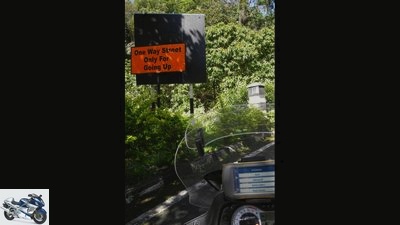
Hofmann
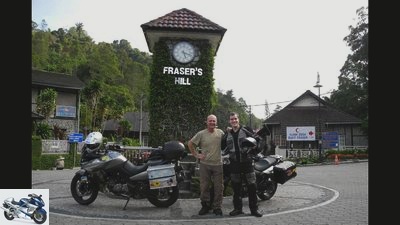
Hofmann

Hofmann
1/8
The first three days of driving went really well. On the first day it was a good 200km from Kuala Lumpur to the Bukit Fraser, an approx. 1400m high mountain. I experienced a first positive surprise in Kuala Lumpur: I feared a driving style similar to that which I encountered in Java (Indonesia) in 2011, but was taught otherwise again. In Malaysia you actually use your indicators, you don’t just drive blindly out of intersections and buses / trucks don’t overtake at will, so you have to take the hard shoulder. In addition, the road surface is really good and the speed limits do not apply to motorcyclists. The first stage to the Bukit Fraser led on winding roads through small villages and tropical vegetation higher and higher up the mountain. After about three hours, Kuala Lumpur and the Genting Highlands were already behind me when I read a promising sign: “Oneway road” So the last 8km to the summit of Bukit Fraser was up a fantastic little road with no oncoming traffic. On one side a rock wall on the other a steep slope overgrown with palm trees. I don’t think I’ve ever had such a driving license in my life! Just watch the GoPro video to understand my enthusiasm:
\ n<div class = \&# 34; v-A_-custom-html v-A_-custom-html – video \ “>\ n<iframe width = \&# 34; 578 \&# 34; height = \&# 34; 325 \&# 34; src = \&# 34; https: //www.youtube.com/embed/6PP7jfKGhAU \&# 34; frameborder = \&# 34; 0 \&# 34; allowfullscreen></ iframe>\ n</ div>\ n</ div>\ n&# 34;,&# 34; consentGroup&# 34;: null}”>
Arrived at the summit, I am just beginning the compulsory search for accommodation with secure parking when I see another V-Strom with an Australian license plate: Christine and Clive are here! The Australian / British couple is also traveling from Malaysia to Europe and contacted me a few weeks ago via the HorizonsUnlimited biker forum. I knew that they were roughly in this region, but not that I would meet them on the first day. I just throw my helmet and jacket into the room, sit down with them and order fried rice with shrimp paste and my first beer in Malaysia. We talk for a while about our respective route and exchange anecdotes about the roads of Southeast Asia. I really couldn’t have dreamed of a better first day. Happy and completely overtired, I fall into bed before 10 p.m. and fall asleep straight away.
The next morning I enjoy the delicious breakfast in the hotel and set off around 10 a.m. Before I set off for Cameron Highlands, I just have to enjoy the one-way road again;) So it’s down the road, up and down again and only then to the tea plantations of the Cameron Highlands to the northwest. The road there is newly built and consists almost exclusively of long curves that you can comfortably drive at 100 in sixth gear. Accordingly, after a good four hours, I’m already in the shower in the hotel and think about how I can best use the evening. In the end, I choose to just do nothing; I sit down in a small Indian restaurant, drink one tea after the other, eat Roti Canai and look at various online portals to see what has happened in the rest of the world.
I can already see that I’m in the travel mood again. The news of war and hostage drama seems unreal far away; almost from another world when I remember the small villages that I crossed only a few hours before. I quickly close my laptop again and after more than three hours I wonder how the time could fly by so quickly. That’s exactly why I travel alone. I don’t have to plan anything, I can be very spontaneous and if I want, I can just be alone with my thoughts for a whole evening and enjoy the moment.
Tomorrow I’m going to Jerantut, the gateway to the Taman Negara National Park. A young woman there came to my aid 1.5 years ago in an awkward situation and I would like to take the opportunity to visit her. I’m excited to see what Aishah has in store for me and look forward to spending time with her and her family.
Until then, I remain with adventurous greetings,
Steven
January 21, 2013
<!– ESI FOR ads.BannerGallery / irelements / esielement / eyJwYWdlIjoiL3N0YXJ0c2VpdGUvIiwibGF5b3V0IjoiYXJ0aWNsZSIsImVsZW1lbnQiOiJhZHMuQmFubmVyR2FsbGVyeSIsImlyQ29uZmlnIjoiMTQ3Mzc4ODEiLCJwYXJhbXMiOnt9LCJpc01vYmlsZSI6ZmFsc2V9 –> <!– CACHEABLE –>&# 34;,&# 34; rectangle&# 34 ;: “<!–# include virtual = \&# 34 / irelements / esielement / eyJwYWdlIjoiL3N0YXJ0c2VpdGUvIiwibGF5b3V0IjoiYXJ0aWNsZSIsImVsZW1lbnQiOiJhZHMuUmVjdGFuZ2xlR2FsbGVyeSIsImlyQ29uZmlnIjoiMTQ3Mzc4ODEiLCJwYXJhbXMiOnt9LCJpc01vYmlsZSI6ZmFsc2V9 \&# 34; –> <!– ESI FOR ads.RectangleGallery / irelements / esielement / eyJwYWdlIjoiL3N0YXJ0c2VpdGUvIiwibGF5b3V0IjoiYXJ0aWNsZSIsImVsZW1lbnQiOiJhZHMuUmVjdGFuZ2xlR2FsbGVyeSIsImlyQ29uZmlnIjoiMTQ3Mzc4ODEiLCJwYXJhbXMiOnt9LCJpc01vYmlsZSI6ZmFsc2V9 –> <!– CACHEABLE –>&# 34;,&# 34; sky&# 34 ;: “<!–# include virtual = \&# 34 / irelements / esielement / eyJwYWdlIjoiL3N0YXJ0c2VpdGUvIiwibGF5b3V0IjoiYXJ0aWNsZSIsImVsZW1lbnQiOiJhZHMuU2t5R2FsbGVyeSIsImlyQ29uZmlnIjoiMTQ3Mzc4ODEiLCJwYXJhbXMiOnt9LCJpc01vYmlsZSI6ZmFsc2V9 \&# 34; –> <!– ESI FOR ads.SkyGallery / irelements / esielement / eyJwYWdlIjoiL3N0YXJ0c2VpdGUvIiwibGF5b3V0IjoiYXJ0aWNsZSIsImVsZW1lbnQiOiJhZHMuU2t5R2FsbGVyeSIsImlyQ29uZmlnIjoiMTQ3Mzc4ODEiLCJwYXJhbXMiOnt9LCJpc01vYmlsZSI6ZmFsc2V9 –> <!– CACHEABLE –>&# 34;}}” ga-track-vis =”article.gallery.inline.vis” class =”v-A_-article__inline-container”>

archive




11 pictures
Pictures: Journey: From Malaysia to Germany
go to Article
To home page
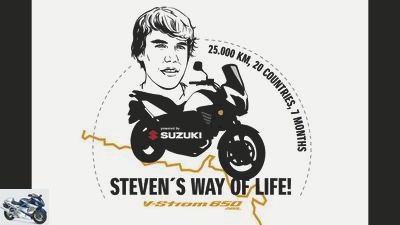
archive
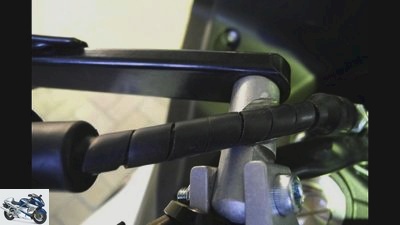
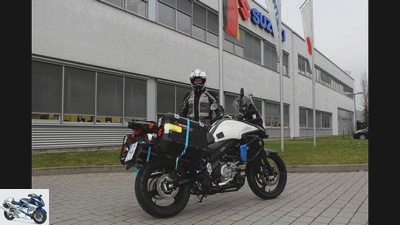
Hofmann
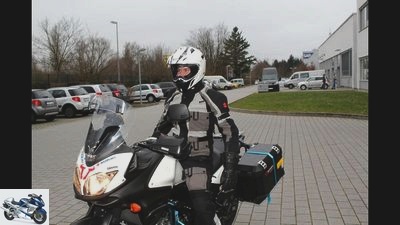
Hofmann
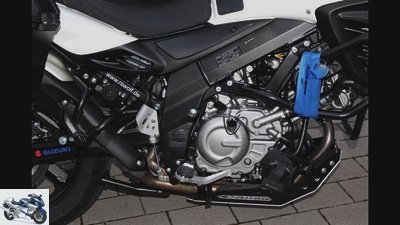
Hofmann
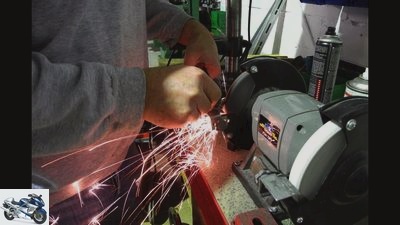
Hofmann
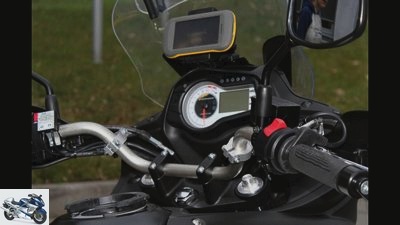
Hofmann
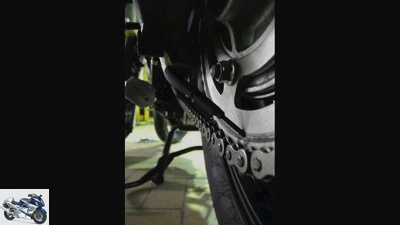
archive
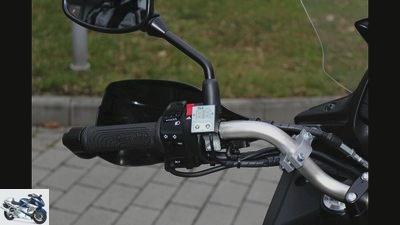
Hofmann
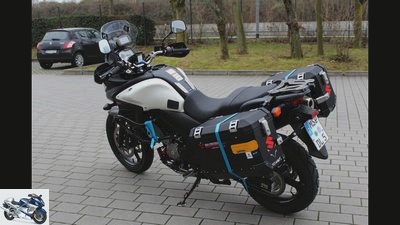
Hofmann
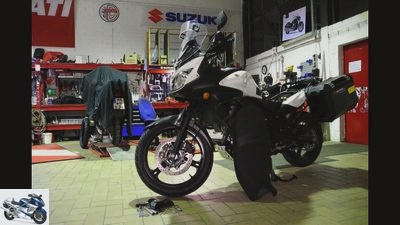
Hofmann
1/11
In the next seven months I will be driving my trusty Suzuki V-Strom 650 ABS from Malaysia to Germany. More than 25,000 km through 20 countries will lead me through jungles, deserts, the Himalayas, Hindukush and the Alps. And most importantly: It will be an interactive road trip that you can actively help shape.
This crazy idea – literally at the beginning – arose in the mountains of northern Laos. Suzuki and MOTORRAD are now helping me to make this dream come true.
who I am?

Hofmann
The V-Strom is firmly lashed to travel.
I’m Steven, 23 years old and I was born in Wurzburg in beautiful Lower Franconia. Until recently my life was very unspectacular: school, high school graduation, business studies at the University of St. Gallen. But then I made the best decision of my life so far. As an exchange university, I did not choose the world-famous business schools in the USA or England, but followed my gut feeling and went to Thammasat University in Bangkok (Thailand).
Overwhelmed by the many impressions, I tried to soak up everything like a sponge and experience as much of the Southeast Asian culture as possible. This is one of the reasons why I began to explore Thailand and its neighboring countries more and more by motorcycle. Whenever I had the time, I rented or bought a wheelchair (a more positive term would be a merciless euphemism) and drove all over Thailand, Malaysia, Indonesia (Java) and Laos. Laos in particular has enchanted me with its peaceful, almost mystical calm. In the poor landlocked country, I drove more than 5000 km across the entire country in two months and had countless encounters with people that I still can’t get out of my head to this day. “Let yourself drift” is a scrap of sentences that many travelers use in an inflationary way, which I really felt for the first time in Laos. The experiences that I was able to make in Laos made a deep impression on me and changed my thinking and hopefully also my actions.
I would like to continue this change and take the next logical step with the upcoming journey. My route will take me through Southeast Asia, Nepal, India, Pakistan, Iran, Iraq, Turkey and Europe. There I will meet people of different cultures, religions and views of life and hopefully I will be able to learn a lot from them.
Help shape it interactively – how does it work?
A blog is all well and good, but I don’t want to just write to myself and possibly even past the readers, I want to be in contact with you. Of course I have laid out a rough route, but the detailed planning is still completely open. If you have a great idea how I can make my trip more interesting, write to me via Facebook and I will implement your wish as far as possible. Do you know a great mountain pass in India or an unusual delicacy in Cambodia or a great restaurant in Nepal? Tell me about it, I’ll go there and take pictures / HD videos (GoPro) that I’ll share with you right here. You will become part of my journey and you will be really close to it when I drive 25,000 km halfway around the world.
You can send your ideas, suggestions and suggestions directly via my Facebook account (Steven’s Way Of Life) or post online here at MOTORRAD:
What was changed on the motorcycle?
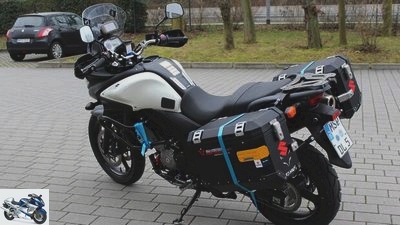
Hofmann
Fully packed with a number of accessories, the V-Strom is now ready for the adventure trip.
Of course, the demands on the motorcycle on such a trip are enormous and differ greatly from those in Germany on paved roads. Accordingly, Rainer Wolf from R.S. Wolf under his wing and gave me incredible support. Not only with various accessories, but also with the many years of adventure travel and rally experience of all employees. Just fantastic. For this I would like to thank everyone involved (Petra, Uwe, Matthias and Rainer). The following accessories were installed:
- Hand protectors from SW-Motech
- Case system from SW-Motech
- Chain lubrication system from CLS2000
- Heated grips from CLS2000
- Two extra loud horns
- Body protection from SW-Motech
- Underbody protection from SW-Motech
- Wider footrests from SW-Motech
Many small changes such as reinforced cables, a repositioned wiring harness, improved insulation etc. can be traced back to the experience of the mechanics and will certainly help me a lot with my project.
There was also a Garmin Montana, which was equipped with various sets of maps by GPS expert Matthias Zorcher. Matthias also explained all the functions of the Garmin Montana with a lot of patience (which is more than necessary for me) and familiarized me with BaseCamp, the Garmin navigation software. Now I can create routes on my own, analyze them with GoogleEarth and adjust them if necessary. With my street maps and the great navigation system, orientation shouldn’t be a problem with the best will in the world 🙂
I am looking forward to your feedback and your creative suggestions for the interactive planning of my trip.
Adventurous greetings,
Steven
February 18, 2013
<!– ESI FOR ads.BannerGallery / irelements / esielement / eyJwYWdlIjoiL3N0YXJ0c2VpdGUvIiwibGF5b3V0IjoiYXJ0aWNsZSIsImVsZW1lbnQiOiJhZHMuQmFubmVyR2FsbGVyeSIsImlyQ29uZmlnIjoiMTQ3Mzc4ODEiLCJwYXJhbXMiOnt9LCJpc01vYmlsZSI6ZmFsc2V9 –> <!– CACHEABLE –>&# 34;,&# 34; rectangle&# 34 ;: “<!–# include virtual = \&# 34 / irelements / esielement / eyJwYWdlIjoiL3N0YXJ0c2VpdGUvIiwibGF5b3V0IjoiYXJ0aWNsZSIsImVsZW1lbnQiOiJhZHMuUmVjdGFuZ2xlR2FsbGVyeSIsImlyQ29uZmlnIjoiMTQ3Mzc4ODEiLCJwYXJhbXMiOnt9LCJpc01vYmlsZSI6ZmFsc2V9 \&# 34; –> <!– ESI FOR ads.RectangleGallery / irelements / esielement / eyJwYWdlIjoiL3N0YXJ0c2VpdGUvIiwibGF5b3V0IjoiYXJ0aWNsZSIsImVsZW1lbnQiOiJhZHMuUmVjdGFuZ2xlR2FsbGVyeSIsImlyQ29uZmlnIjoiMTQ3Mzc4ODEiLCJwYXJhbXMiOnt9LCJpc01vYmlsZSI6ZmFsc2V9 –> <!– CACHEABLE –>&# 34;,&# 34; sky&# 34 ;: “<!–# include virtual = \&# 34 / irelements / esielement / eyJwYWdlIjoiL3N0YXJ0c2VpdGUvIiwibGF5b3V0IjoiYXJ0aWNsZSIsImVsZW1lbnQiOiJhZHMuU2t5R2FsbGVyeSIsImlyQ29uZmlnIjoiMTQ3Mzc4ODEiLCJwYXJhbXMiOnt9LCJpc01vYmlsZSI6ZmFsc2V9 \&# 34; –> <!– ESI FOR ads.SkyGallery / irelements / esielement / eyJwYWdlIjoiL3N0YXJ0c2VpdGUvIiwibGF5b3V0IjoiYXJ0aWNsZSIsImVsZW1lbnQiOiJhZHMuU2t5R2FsbGVyeSIsImlyQ29uZmlnIjoiMTQ3Mzc4ODEiLCJwYXJhbXMiOnt9LCJpc01vYmlsZSI6ZmFsc2V9 –> <!– CACHEABLE –>&# 34;}}” ga-track-vis =”article.gallery.inline.vis” class =”v-A_-article__inline-container”>

Hofmann




17th pictures
Pictures: Journey: From Malaysia to Germany
go to Article
To home page

Hofmann

Hofmann

Hofmann

Hofmann

Hofmann

Hofmann

Hofmann

Hofmann

Hofmann

Hofmann

Hofmann

Hofmann

Hofmann

Hofmann

Hofmann

Hofmann

Hofmann
1/17
“Why are you doing this alone? Can’t you find another madman Aren’t you lonely then? “
Something similar was probably the most frequently asked question to me in the run-up to my trip. For people who have never traveled through Asia, it is difficult to imagine that loneliness is an impossibility there. You just meet locals, other travelers or emigrants with whom you spend time together everywhere. As a single traveler in particular, you are often approached and ironically, you have more social contacts than group travelers. This phenomenon was consistently evident in Cambodia:
After four great days in Bangkok I left Sivalai Place with old friends and headed for Cambodia. I made my last stop in Thailand near Klaeng (Rayong), where the parents of a good friend invited me to their home. They picked me up in Klaeng, showed me the food market and bought some local specialties that we would enjoy with the whole family in the evening: chicken, rays, shrimps, mango with sticky rice, desserts … The dinner together was surprisingly fun . Some family members could speak a little English and together with my knowledge of Thai, hands, feet and plenty of wine, we got along very well. The next morning I said goodbye to the family and continued on my way to Cambodia.

Hofmann
Dusty slopes as far as the eye can see.
When I arrived at the border, I noticed a 200cc Lifan and only a few meters away I met Heinz, the German owner of the machine, at the customs house. He is around his mid-50s has lived almost everywhere in the world and currently lives in Chiang Mai (Thailand). We get along straight away and decide to tackle the journey to Sihanoukville together. Since neither of us really informed each other about the city, we land at the completely deserted end of Sihanoukville and check into the extremely tempting-sounding Snake Guesthouse. After a shower we stand downstairs in the courtyard by the machines and are a little at a loss as to how to spend the evening in this ghost town. At that moment, Roman, Jana and Daniel, a Russian family, approach us and Roman says beaming with joy: “If you need help with anything, let me know! I am very happy to help you! “
Fantastic! Heinz is looking for a gas station, I am looking for an ATM and we are both looking for a good restaurant. As soon as our wish has been expressed, Roman gets on his scooter and leads us about five kilometers into the city center. A little later, with a full tank of fuel and fresh money, Heinz and I sit overjoyed in front of a huge grill plate in a beach bar and make plans for the next day. When we wanted to start our way back around 10:00 p.m., I found a note on my GPS mount. My first thought was “crap, parking ticket”, but luckily there is no such thing in Cambodia. Jana and Harold, two Germans who drove exactly my route in the opposite direction, drew me a small map of their guesthouse and invited me for a beer.

Hofmann
After countless failed river crossings, I gladly accept the offer and let it go.
Immediately I throw all plans for the next day overboard and drive with Heinz to the Panda Guesthouse, where Jana and Harold welcome us warmly. For the next two hours we exchange hair-raising anecdotes that only motorcycle travelers can experience, talk shop about our machines and coordinate our further routes. The two of them are very nice and funny and can also give me valuable tips for my future trip. So I decide to stay in Sihanoukville for another day while Heinz is already driving towards Phnom Penh – a very good decision, as it turned out. Practically the whole day I ask Jana and Harold Holes about their experiences in the stomach; especially about the piece in Pakistan. Both confirm my assessment that it is harmless, but still give me some contacts who are very knowledgeable and can evaluate the current security situation well. Funnily enough, Jana and Harold are also on the road in Suzuki V-Stroms and have not had a single breakdown (!) On their 25,000 km – not even a flat tire. Let’s hope I’m that lucky too.
The next morning I get back on my DL650 to head for the capital Phnom Penh, a good 300 kilometers away. The traffic there is insane, to put it mildly. In a flash of absolute anarchy, cars, buses, trucks and an endless number of mopeds criss-cross red lights, footpaths, etc. Absolutely crazy! In contrast, Bangkok is a model of orderliness. After about an hour in dense city traffic, I reached the hotel and bar street directly on the Mekong and could hardly believe my eyes: an orange 200cc Lifan stood in front of a small hotel – I found Heinz again in the two million metropolis.

Hofmann
It doesn’t help either: Either push or bottle gasoline in the tank.
Since I usually go to bed much earlier than Heinz, I said goodbye shortly after our dinner together and started looking for a typical Cambodian breakfast early the next morning. Only a few streets away I came across the three infallible signs of a good restaurant: It was dirty, noisy and you sat on plastic chairs. As in almost all of Southeast Asia, a wonderfully fragrant noodle soup with meat and all kinds of seasoning options was served at this stand. These are actually the most important things; There is strong and weak fish sauce, dried chillies, chilli paste, salt, pepper, sugar, lime, soy sauce … Only a few minutes later, immersed in this soup alchemy, I noticed that the person sitting next to me was watching me with interest. A short time later he introduced himself to me as Boun Houen and we then talked for about 1.5 hours about the differences between Cambodia and Germany, my trip and of course soup;)
The next day I wanted to have the first service in Phnom Penh. Thanks to my extraordinary ability to get lost despite GPS and a map, I missed the large Suzuki Service Center and ended up in a tiny workshop. There, Dalin, a young English teacher, offered me help, took me to the Suzuki headquarters and even translated for me there. About 45 minutes later my DL650 had passed all tests with flying colors and I went to lunch with Dalin. His story is really impressive. He was born as one of five children into a very poor family in rural Cambodia.
Since the public schools offered inadequate educational opportunities, he worked as a child in order to be able to afford a few afternoons at a private school. With this knowledge, he found work as a waiter in Phnom Penh and moved into a shared apartment with Westerners to further improve his English skills. Today he is an English teacher at a private school and will teach at the national university for the next few years.
How lucky I was to have been born in Germany. Without anything in return, I acquired the right to a good education when I was born and perhaps that is precisely why I am rarely aware of my extraordinary situation. Dalin is also 23 years old and very similar to me in his way. So it was easy for me to put myself in his shoes and unfortunately I have to admit that I probably wouldn’t have shown his fighting spirit. If I had been born in Cambodia – otherwise exactly the same person – I would be a poor farmer today; I only travel the world through a different place of birth with a good school and university degree. A sobering thought that I hope will always keep me on the ground.
After a rather uneventful drive to Siem Reap, the city immediately bordering Angkor Wat, I was enjoying my Indian dinner when I noticed a young blonde woman. She kept smiling and was very polite and respectful to the waitress. On the spur of the moment, I asked her whether we would like to share a tuk-tuk to the temple complex. To my surprise it turned out that Johanna comes from Swabia and studied photography in Wurzburg (my hometown) – what a coincidence! We talk about photography and our travel plans for a while before we decide to just relax the next day and explore Angkor Wat the next day. Johanna is very nice, intelligent, uncomplicated and funny; in short: the perfect travel companion. We jokingly made plans how we could weld a sidecar to my motorcycle or attach a tuk-tuk trailer hitch (all-clear to Suzuki: I have rejected both ideas;)).
Angkor Wat itself was very beautiful and impressive, but couldn’t quite keep up with the sparkling hymns of praise (keyword: eighth wonder of the world). Nevertheless, it was a very nice day, which we befittingly in the infamous bar Angkor What? let it fade away. Of course only with a maximum of two beers, as I would be going to Laos the next day … Laos, my secret love, since I drove a motorcycle all over the mountainous country for two months last year. There I learned as much as perhaps nowhere else in such a short period of time and I go through many encounters in thoughts or dreams over and over again. I’m curious how it will feel when this dream world becomes a reality again. Off to Laos!
But when I turned left towards Udomxai, the other – so much more typical – Laos awaited me: 75 kilometers on an almost unbearable mogul slope. Everywhere you looked potholes, some up to 30 centimeters deep. The bad thing wasn’t necessarily the road damage itself, but the amateurish repair work. Some of the largest potholes were simply filled in with loose sand and coarse stones that had spread over the entire roadway over time.
After each truck it took about two minutes until the thick dust had cleared a bit and you could continue driving safely without honking wildly. At about 30 km of this ordeal, what I had been waiting for two months happened: my first puncture. Today of all days I thought to myself. But what is a good time for a breakdown??
Fortunately, I only cut the tire on a small piece of metal so that there was enough air pressure to cover the last 40 kilometers to Udomxai while driving slowly. Each of the tiny workshops required an acting masterpiece to make them understand that I don’t have a tube in the tire and that it therefore doesn’t have to be removed from the rim. In the end, I was lucky in the fifth shop. After some back and forth, he realized the problem and was able to fix my tire in just two minutes. I had already planned to buy a breakdown repair kit in Chiang Mai anyway and consider this incident as a wake-up call and valuable object lesson at the same time.
This incident set me back a precious hour in my schedule. So on the 130 kilometers to Pak Beng I had to speed up, but I wasn’t allowed to overdo it on the mountain roads. One fall and the whole time gain – and possibly my further journey – is gone. Shortly after 3 p.m. I arrived at the ferry station and was very lucky. An almost fully loaded car ferry still had space for me and started to cross the Mekong straight away. That saved me not only a good 20 minutes of waiting time, but also the rickety wooden bridges of the motorcycle ferries, which are simply too small for my Suzuki.
I took courage and for the first time really believed that I could do it. But then I had made the calculation without the Laotian border guards. At around 3:45 p.m. I was in Nam Ngeun on the border with Thailand, had already stamped out and only had to go through customs. I thought it was a formality, as the customs officials simply waved me through when I entered the country and neither asked for nor issued any documents. Unfortunately, regulations in Laos are obviously not implemented in a uniform manner. My friendly but determined controller wanted to get some kind of form, which of course I couldn’t show. I encouraged him to do something good, showed him my passport again and sold him my vehicle registration document as a German import document. Apparently that was enough for him, because he gave me my passport back and let me leave for Thailand without any complaints.
It was much more professional there. After two minutes, my passport was stamped and at the customs station I was asked to go to an air-conditioned office to issue me with a temporary import document. At 5 p.m. I was finally finished, but I also had to accept that I would never finish my originally planned route before dark. And so I decided on an alternative, shorter route, which ultimately led me to a luxurious – and amazingly cheap – hotel in Pua shortly after 6 p.m. and a more than 10 hour drive.
For the next day, I cobbled together a fantastic 500-kilometer mountain tour over tiny streets and country lanes with the Garmin BaseCamp software. And so I was already sitting on my Suzuki at 8:00 am, driving a small mountain road towards the west, when it suddenly ended after 35 kilometers. From this point on, my Montana 600 indicated the road as “unpaved”, which is an inadmissible glossing over. Even the 200 meters that I could see were extremely steep, sandy and had deep ruts. From Laos I still had an impressive memory of how treacherous this mixture is, which is why I turned around and drove around the piece on road 1148. A good decision, as it should quickly turn out to be.
With almost no oncoming traffic, I drove a good 1.5 hours through dreamy mountainous landscapes. One curve lined up after the next, so that you never really got out of the lean position; a feeling like skiing in the best conditions on the slopes. And that was just the beginning of this outstanding day of driving! From then on it went non-stop on mountain roads for about 400 kilometers directly along the Laotian and later Burmese border. Coffee and tea were grown on the slopes, which were then sold in luxury resorts at the top of the pass. Unfortunately, the offer was primarily aimed at wealthy Thai tourists and far exceeded my budget. And so I contented myself with the spectacular streets and a spicy noodle soup at a small street stall.
After about six hours I reached the Golden Triangle (Laos – Thailand – Myanmar) and continued my way from there along the Burmese border. Here the mountain passes became even steeper, narrower and more deserted. There are actually only three reasons to drive these tiny paths: You live there, you drive the street for sheer pleasure or you smuggle. The military presence in this region was correspondingly strong. Every 10-20 kilometers I had to stop at a military checkpoint, explain where I was going and sometimes pull out my passport.
Fortunately, the soldiers were very nice across the board and I obviously didn’t quite fit into their smuggler profile, so they usually gave me a friendly smile and opened the barrier after two minutes. I just couldn’t get enough of these breathtaking mountain roads! Although I had been in the saddle for more than eight hours, I continued to extend the stage until the setting sun finally brought me back to spheres close to the earth.
Still intoxicated from the wild cornering, I headed for a small village where Feirn’s family had invited me to their home. There I would face the next challenge and go hunting with Feirn’s father. Shortly before 6:00 p.m. I reached the idyllic village, unloaded my luggage with the last rays of sunshine and was greeted directly with a Thai whiskey – it couldn’t be better!
After a quick shower, the entire family had gathered around a richly laid table. Wonderfully fragrant northern Thai dishes were waiting for me: pork in deep-fried tea leaves, salad made from beef, blood and onions, various soups, rice and of course more Thai whiskey. It tasted really good! Tired, fat, a little tipsy and overjoyed, I fell into bed at 9:00 p.m. and fell asleep like a rock. What a great start to my Thailand marathon! If the other days are only half as nice, it could be an absolute highlight of my trip.
Related articles
-
Schulz to travel Motorcycle world tour Motorcycle world tour 50,000 kilometers home Many dream of the great journey, the trip of a lifetime. At some…
-
MOTORCYCLE road book: Out and about on the world’s dream roads
Drawing: archive to travel MOTORCYCLE road book: Out and about on the world’s dream roads MOTORCYCLE road book On the way on the dream roads of this…
-
The coolest lady gang in the world – Litas Women’s Motorcycle Club
James Cheadle Sports & scene Motorsport The coolest lady gang in the world – Litas Women’s Motorcycle Club The coolest lady gang in the world – Litas…
-
World record ride with an electric motorcycle
fact 15th pictures fact 1/15 How far can an electrically powered series motorcycle go in Drive 24 hours? The Zero S covered 1,316.88 kilometers. That is…
-
Motorcycle tour through Bolivia
Daniel Lengwenus 29 pictures Lengwenus 1/29 Experienced globetrotter takes on a young student for her first tour of South America. An adventure in itself…
-
Sven Wedemeyer 25th pictures Sven Wedemeyer 1/25 Visitors are welcome to the double pack in Bremer Schuppen 1. They screw, think, celebrate and create….
-
MOTORCYCLE Travel Podcast: Overland to New York
leavinghomeffunktion.com to travel MOTORCYCLE Travel Podcast: Overland to New York MOTORRAD travel podcast RIDE (episode 5) 972 Breakdowns – Overland to…
-
Daytona Travel Star GTX motorcycle boots in the endurance test
Roman Kirschbauer clothing Boots Daytona Travel Star GTX motorcycle boots in the endurance test Daytona Travel Star GTX Motorcycle boots in the endurance…
-
Motorcycle tour through Algeria
to travel Motorcycle tour through Algeria Motorcycle tour through Algeria The dunes of the Sahara Algeria. The grave road, the sand dunes from Erg…
-
Motorcycle tour Altiplano Chile and Bolivia
Biebricher, Werel 23 pictures Biebricher, Werel 1/23 The plateau is more than 3300 meters above sea level. This is not only felt by the human body, but…